St. Ignace GC – Hole-by-Hole
Two of my last hole-by-hole posts came from Kauri Cliffs and Cape Kidnappers, two New Zealand courses that are rated in the top 100 in the world. So you might ask yourself why I’m doing a hole-by-hole on St. Ignace, a course that doesn’t even show up on the Tourism New Brunswick list of the most popular courses in the province? The answer is simple – it has some of the best and most challenging golf holes you’ll find anywhere in Atlantic Canada.
Built in 1981, at the same time that nearby Kouchibouguac National Park was being developed, it provides a nice addition to the park activities that include swimming at Kelly’s Beach, canoeing, kayaking, biking and boat tours. I’m not sure who paid for it, but they did hire one of Canada’s best known golf architects, Geoffrey Cornish, a native of Winnipeg who was a long time associate of Stanley Thompson, the doyen of Canadian golf architects. Cornish designed over 200 golf courses including New Ashburn where I have been a member for more than 40 years.
The land upon which St. Ignace is laid out consists of heavily forested rolling hills in a very rural part of the province. Every hole is completely separate from the other holes and you won’t find a single dwelling anywhere near the course. It’s a very pure golf experience, although if you are one who insists on walking this will be a real workout. I strongly recommend taking a cart.
From the tips the course plays 6,541 yards which is not long by today’s standards, but with the many ups and downs it will play longer than that. It has a 131 slope which is the same as New Brunswick’s best known course Algonquin, so it’s not a pushover by any means. I’ll be playing from the senior tees which is a reasonable 5,694 yards.
One further note – if you are a fanatic about conditioning this is not the course for you. With a greenskeeping staff of only four it is impossible to maintain the fairways and tee boxes in the condition I’m sure they would like to. Instead the efforts have been put into the greens which are excellent and from the photos you will see that they shine like beacons compared to the fairways. You play St. Ignace for the challenge and strategy, not the conditioning.
So let’s tee it up.
St. Ignace No. 1 – 304 Yard Par Four
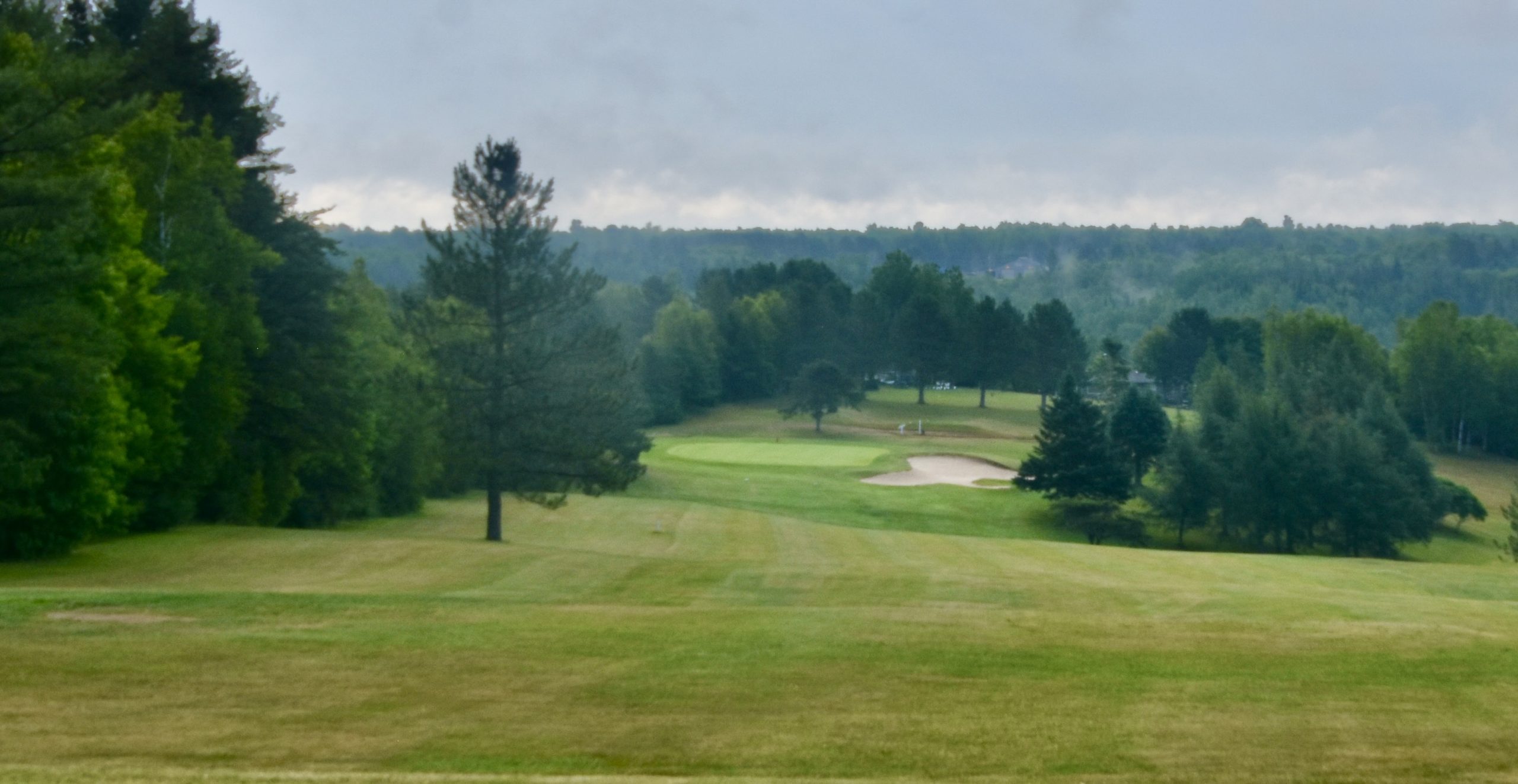
Right from the first tee you can see that the area is heavily forested and that each hole is distinct. This hole does not require a driver and you just need to avoid the trees on the right as the fairway slants that way.
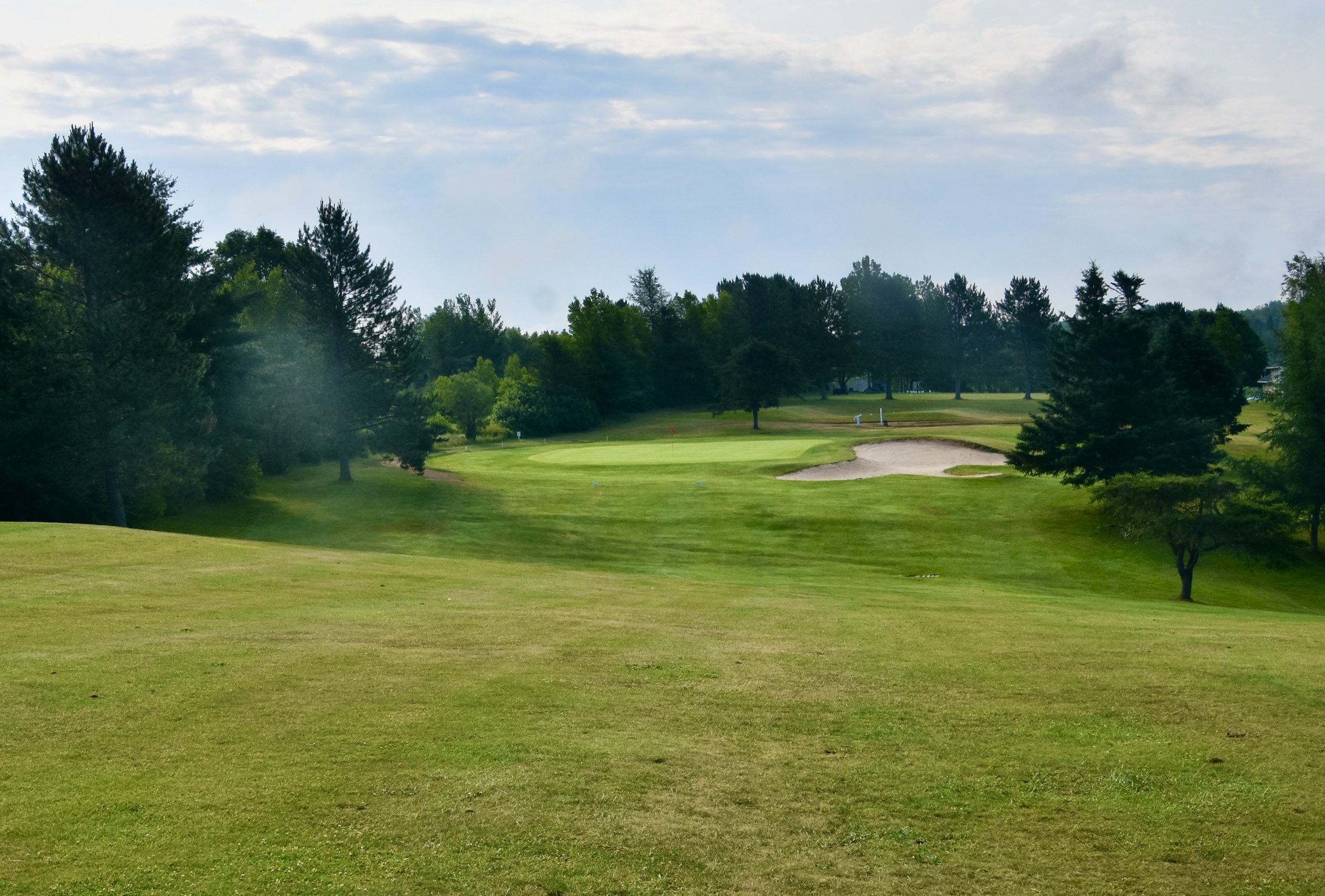
A wood or even a hybrid off the tee should leave something like this for the approach shot. That’s a sucker pin placement behind the bunker, but a well struck second will leave a birdie putt. For the more cautious, hitting to the centre of the green should make for a two putt par. This is a nice looking and fairly benign starting hole. Note what I wrote about how the green stands out colour wise compared to the fairway.
No. 2 – 426 Yard Par Five
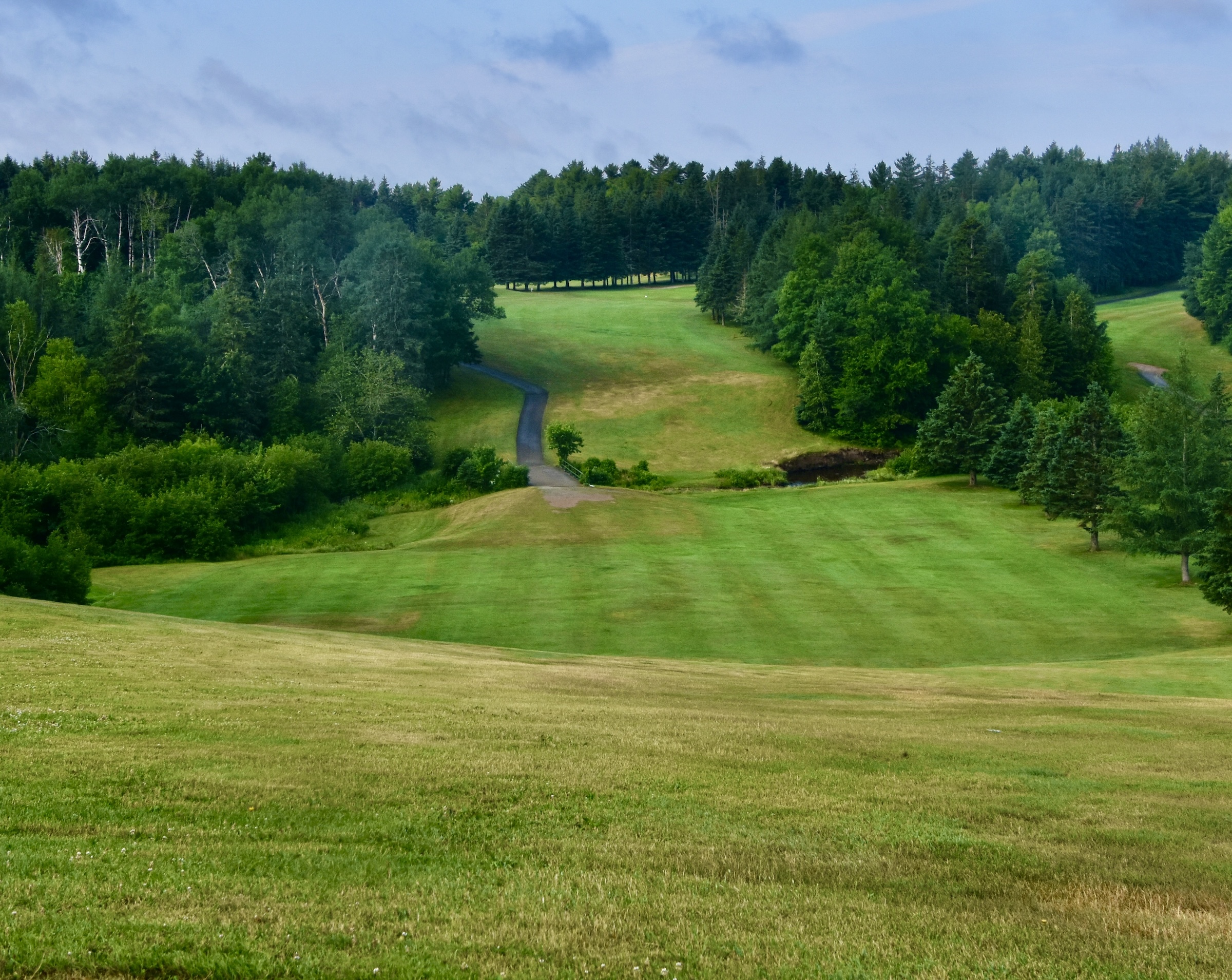
This is an absolutely beautifully designed hole that has a real risk/reward factor to it. At 426 yards it should be reachable in two by big hitters, but in fact with the green tucked behind the trees to the right it is a very difficult hole. Trying to clear the stream off the tee is not smart, as the fairway narrows considerably and a driver would need to be struck perfectly to make it.
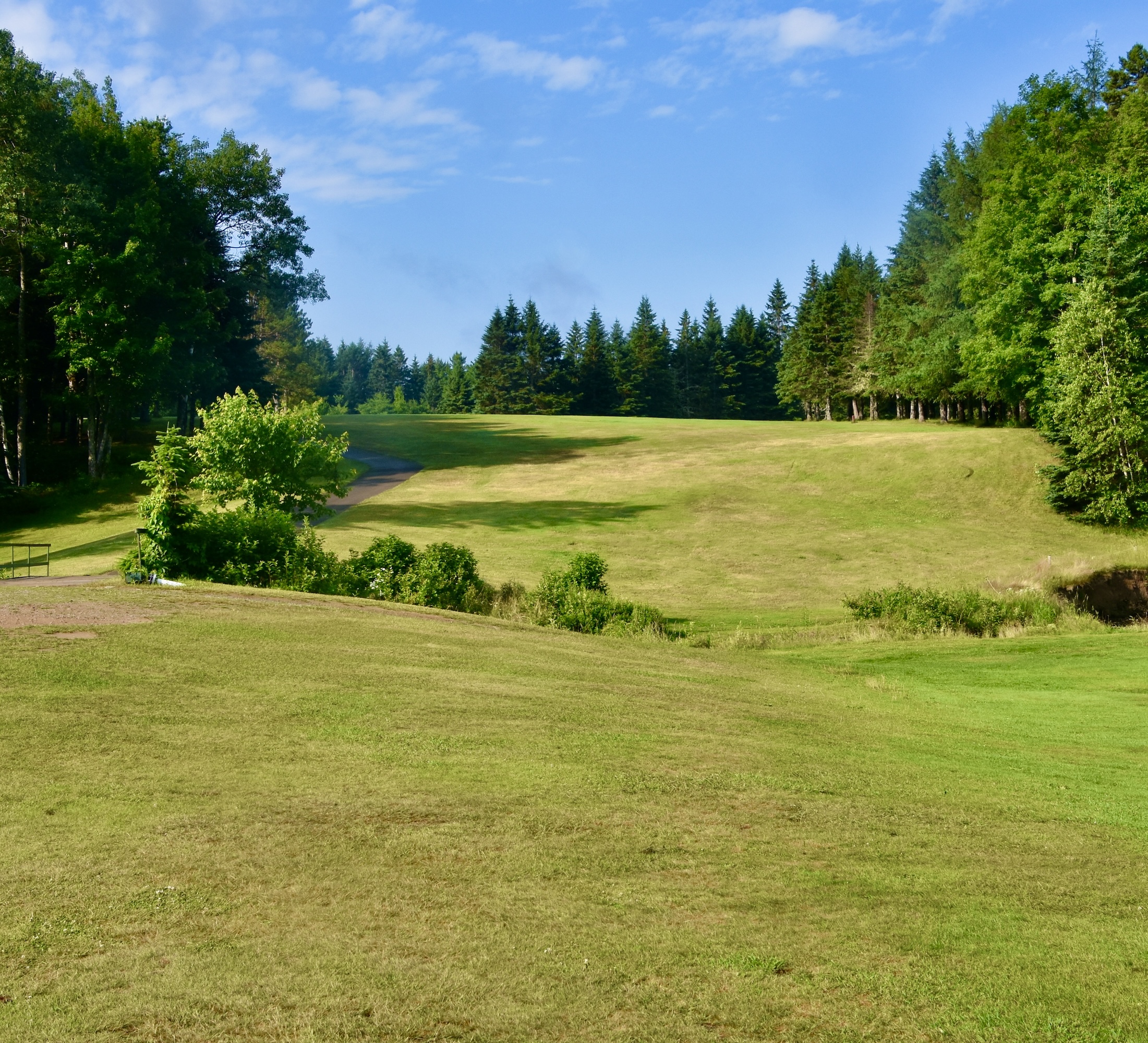
Playing it safe off the tee will still leave a pretty daunting second shot as you need to hit it far enough to get a good look at the green for the approach.
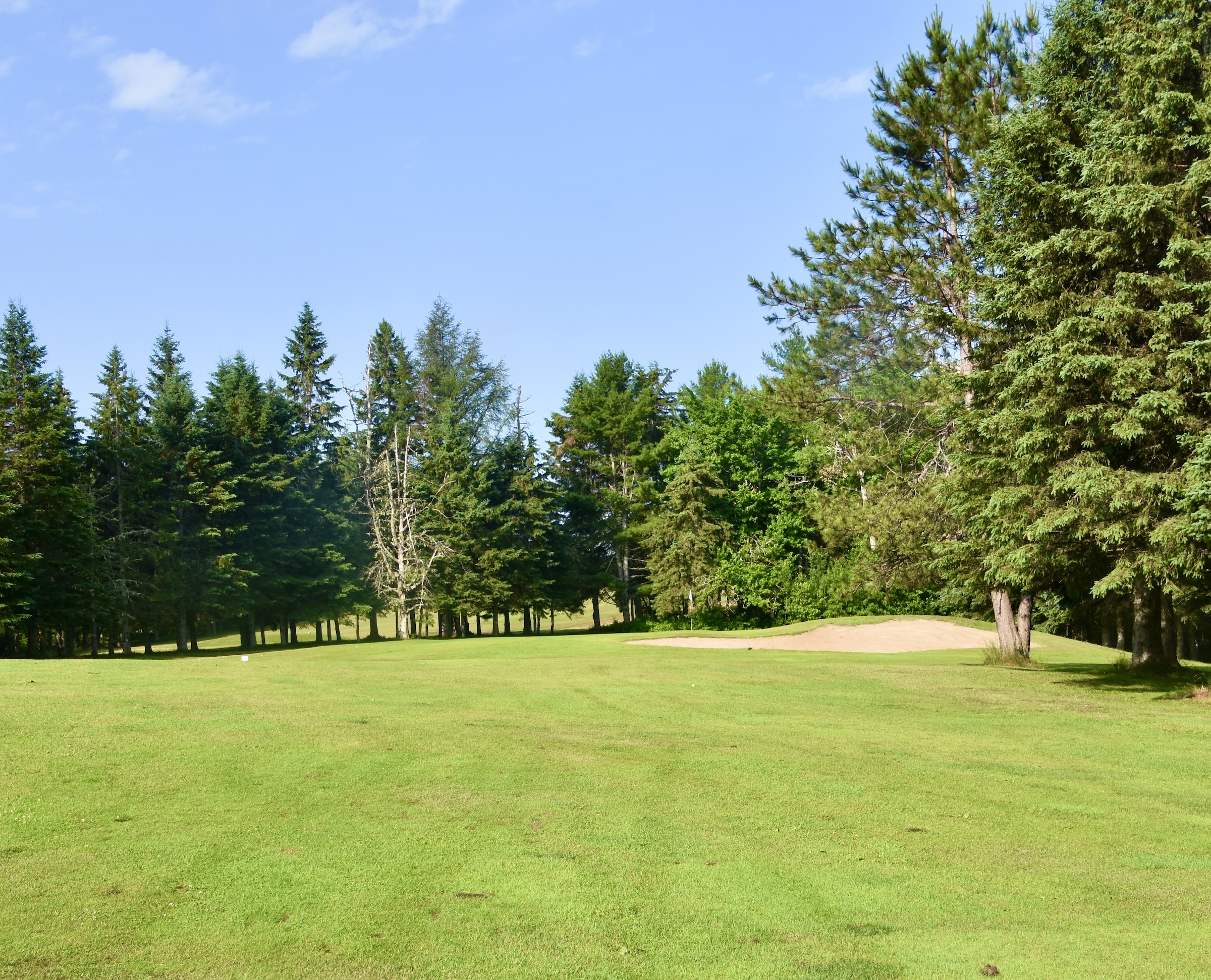
Assuming you did make a decent second shot, you will have an easy wedge to the green on the approach. This is the #3 stroke hole, but if you play it sensibly you should come away with a par.
St. Ignace No. 3 – 368 Yard Par Four
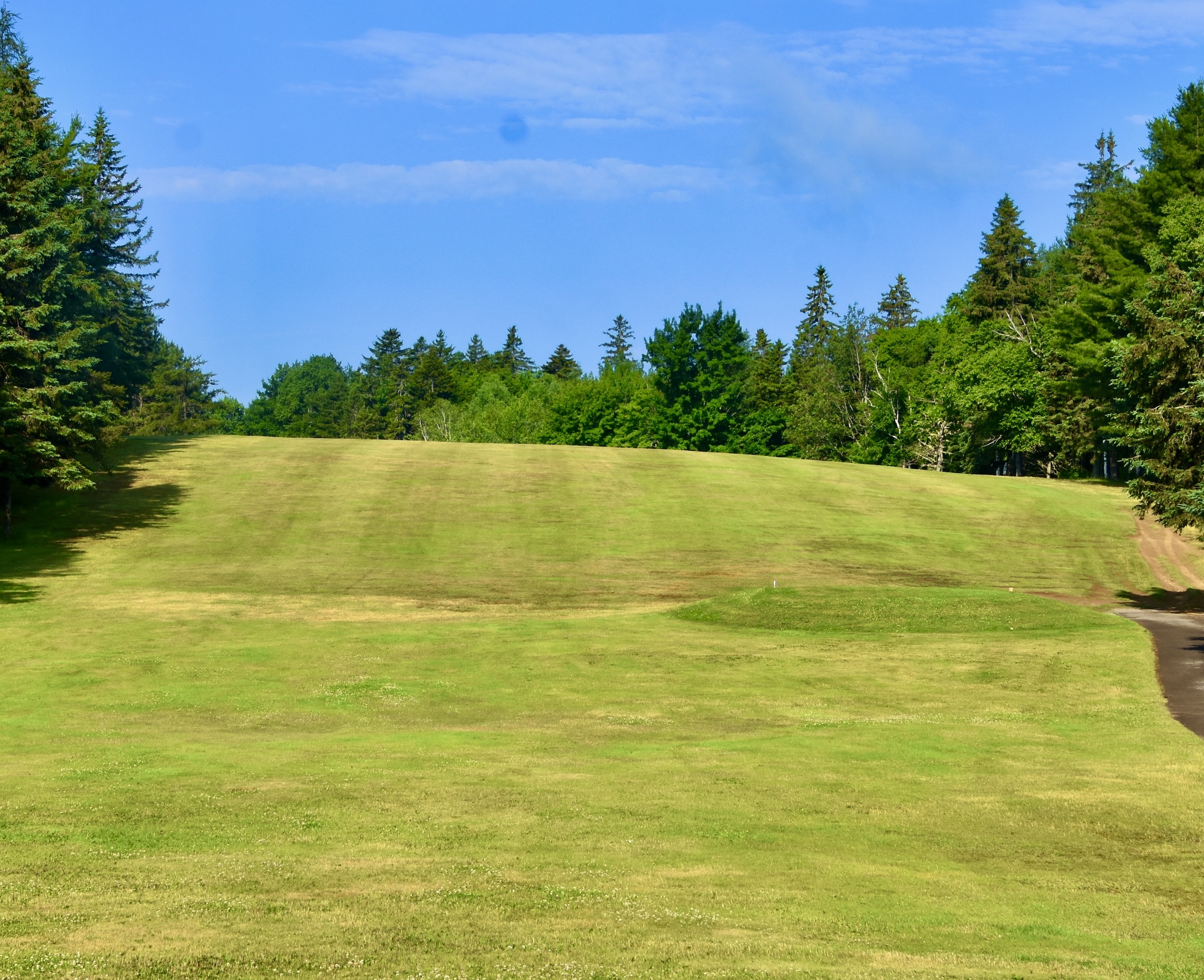
One of the downsides of building a course on terrain that has many elevation changes is you are inevitably going to have a lot of blind tee shots and St. Ignace has more than its share. But so does the Plantation Course at Kapalua which is one of the best courses I have ever played. This the #1 stroke hole on the course and it’s a brute, playing way longer than the stated yardage. This is the place for a driver, just to make sure you get over the ridge.
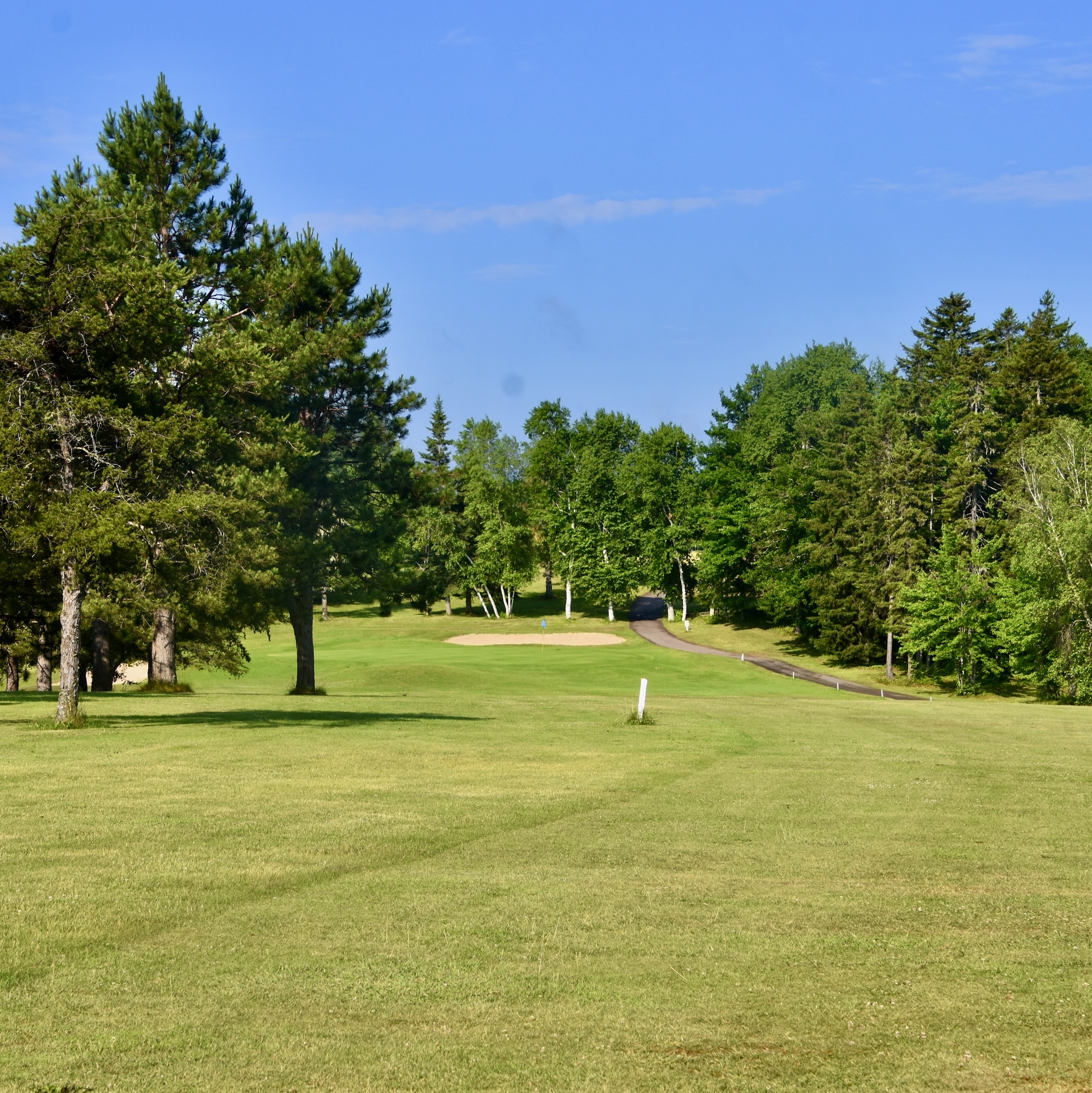
This approach shot is much longer than it appears from the photo with very little room for error. Coming up short is much better than being over the green. BTW, the greens at St. Ignace are not fast and quite true so you shouldn’t be tearing your hair out over three putts.
No. 4 – 344 Yard Par Four
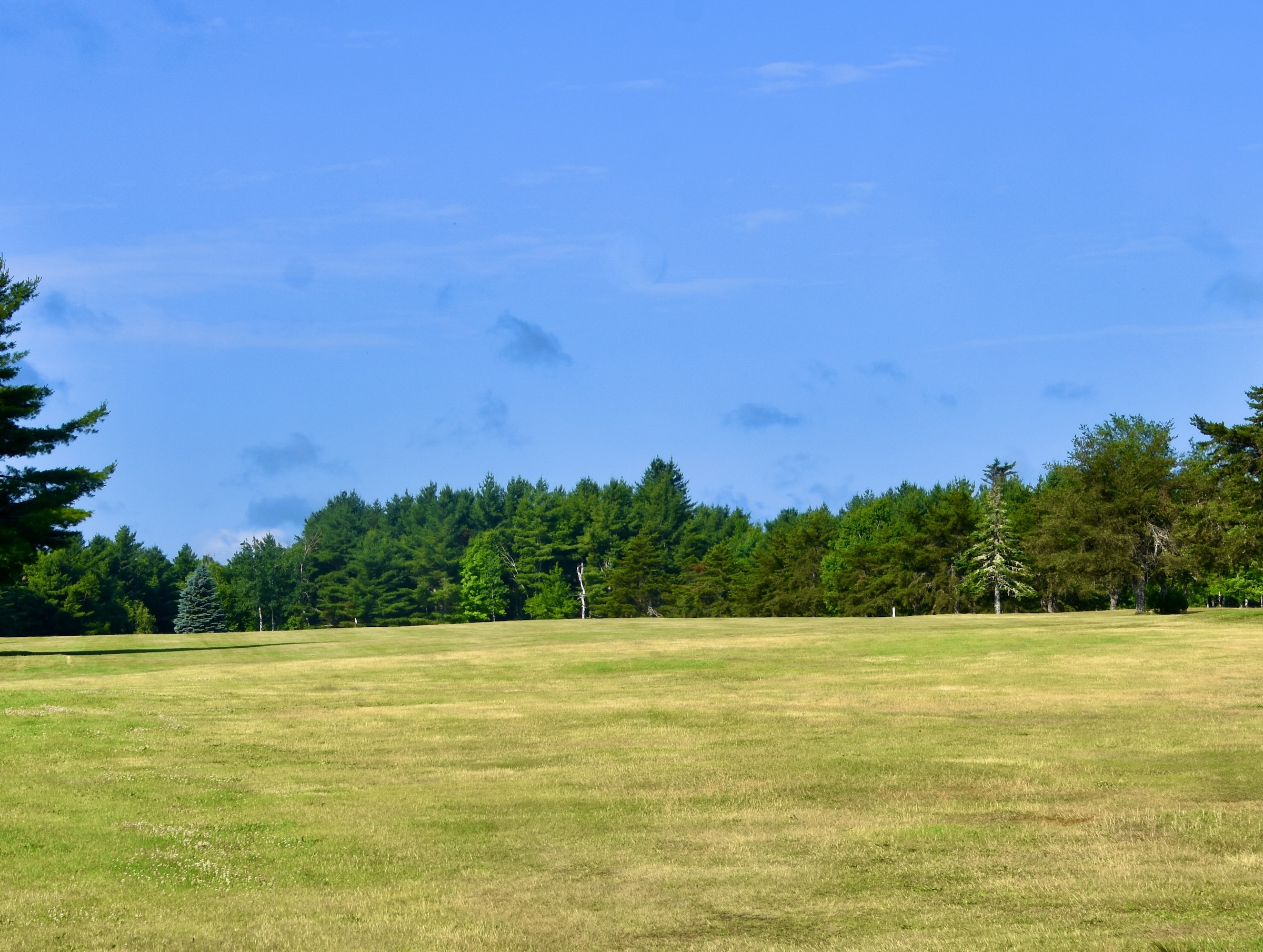
Another blind tee shot as the course continues to rise for the third straight hole. This one is short enough and the fairway wide enough that getting over the crest safely shouldn’t be an issue.
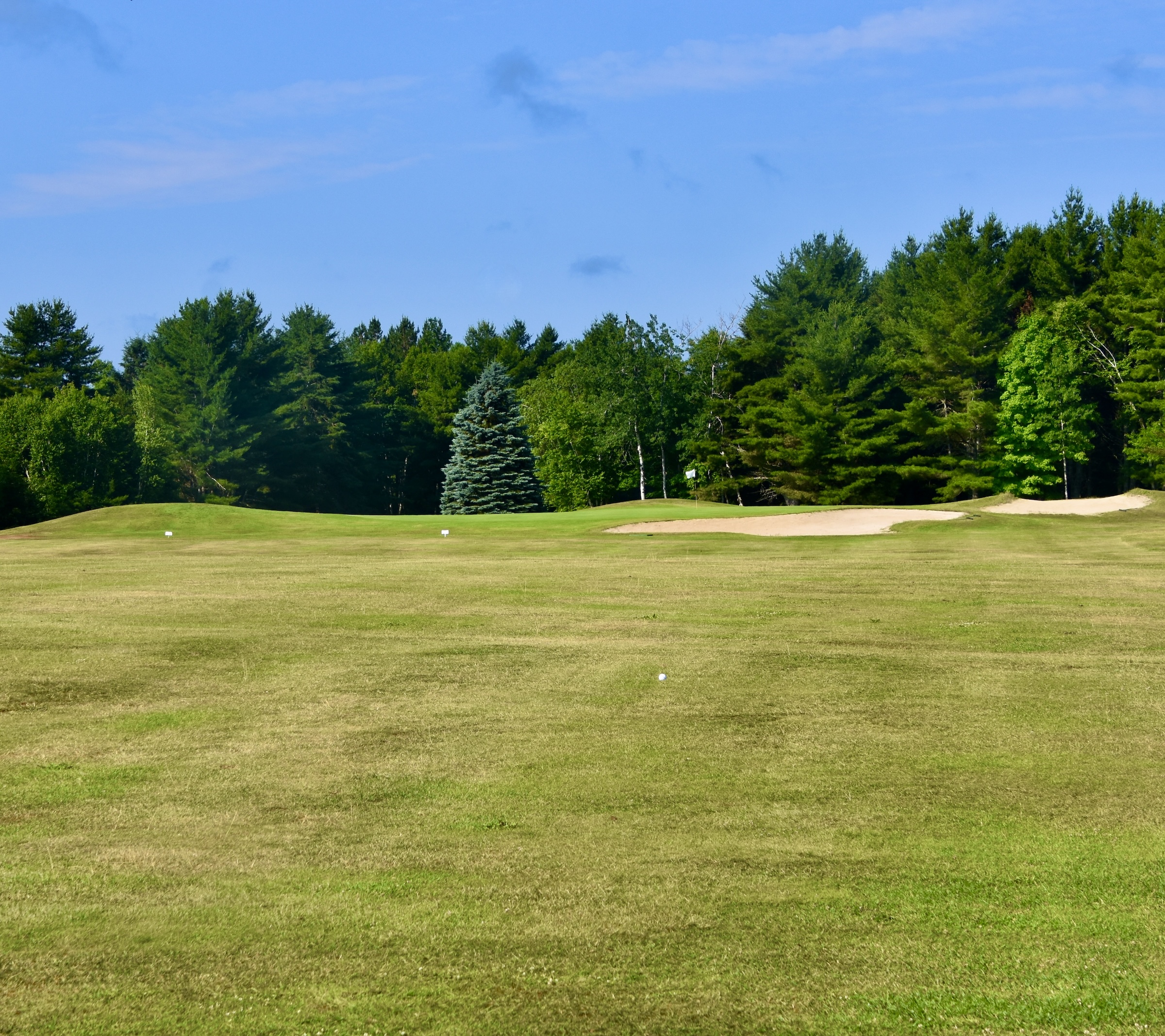
This is the look you should have for your approach on No. 4, unless you are a long hitter like Grant Fraser who I am playing with. I had to get used to seeing his ball 30 to 50 yards ahead of mine on every hole.
St. Ignace No. 5 – 106 Yard Par Three
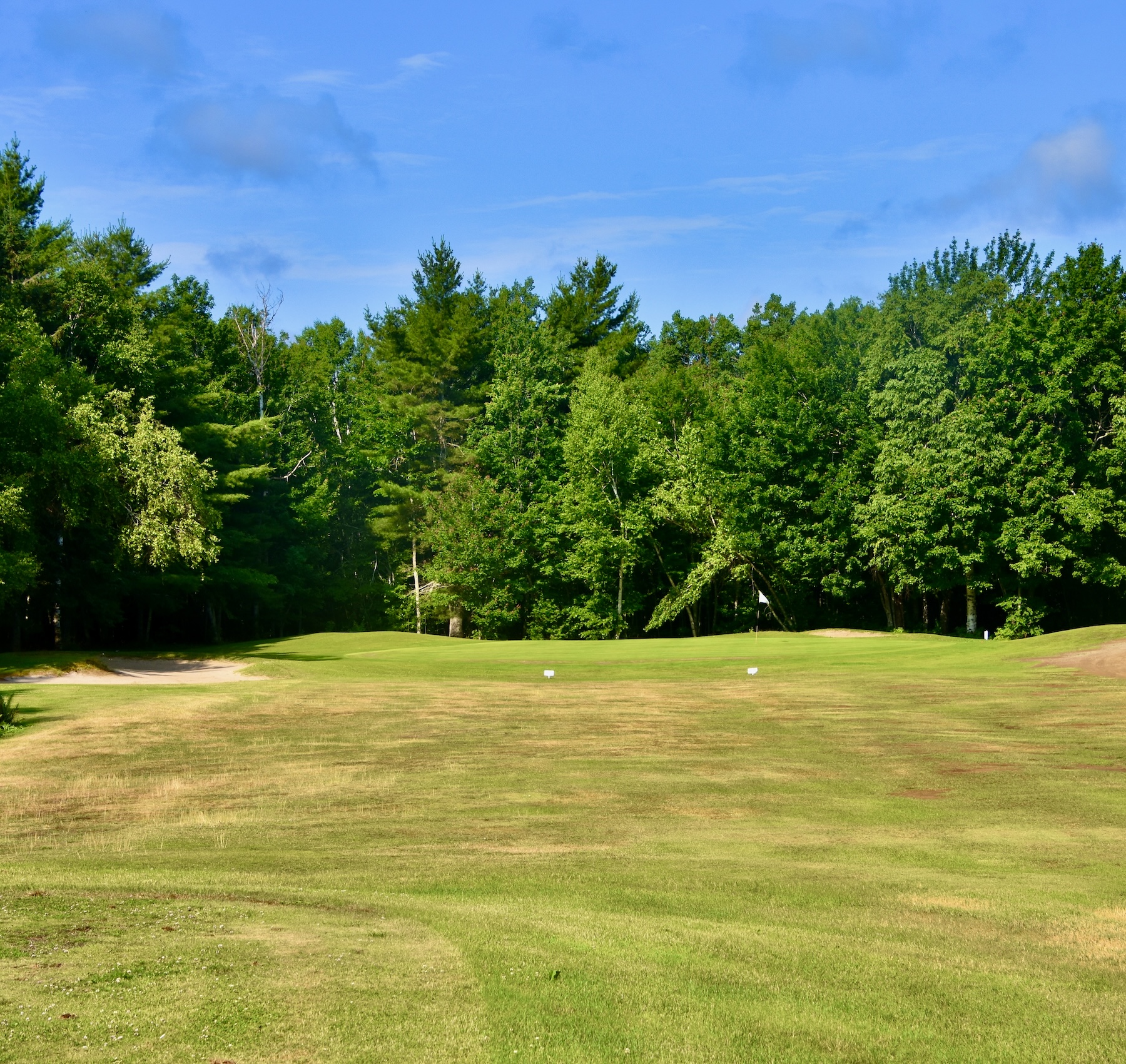
At only 106 yards this hole is the easiest by far on the front nine and with the right club selection should yield a par or better every time. This is the only easy par three at St. Ignace so enjoy it because there is a lot worse to come.
No. 6 – 354 Yard Par Four
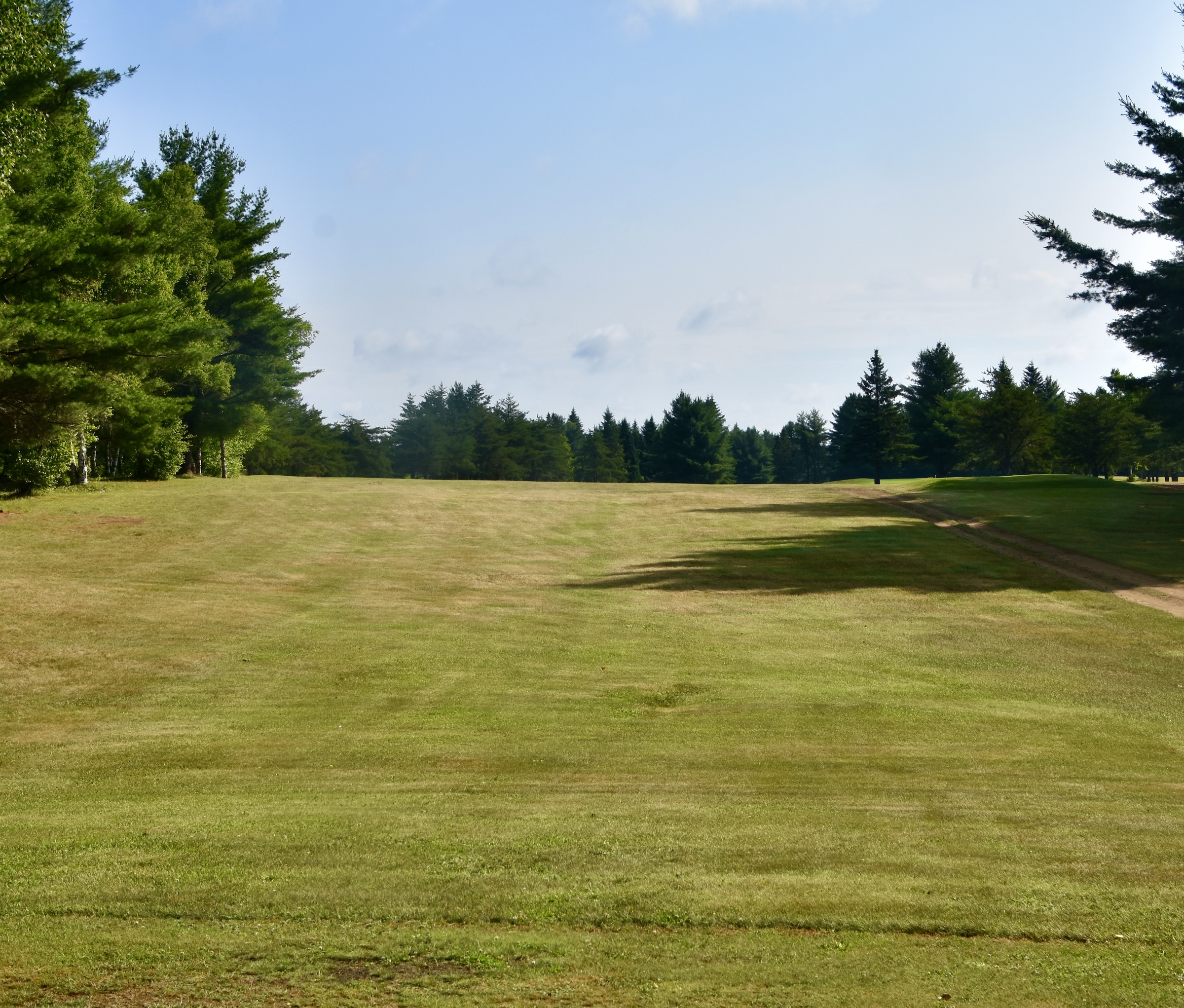
While No. 5 was relatively flat, No. 6 continues the uphill trend on the front nine. Once again a generous fairway allows for a grip and rip it approach off the tee.
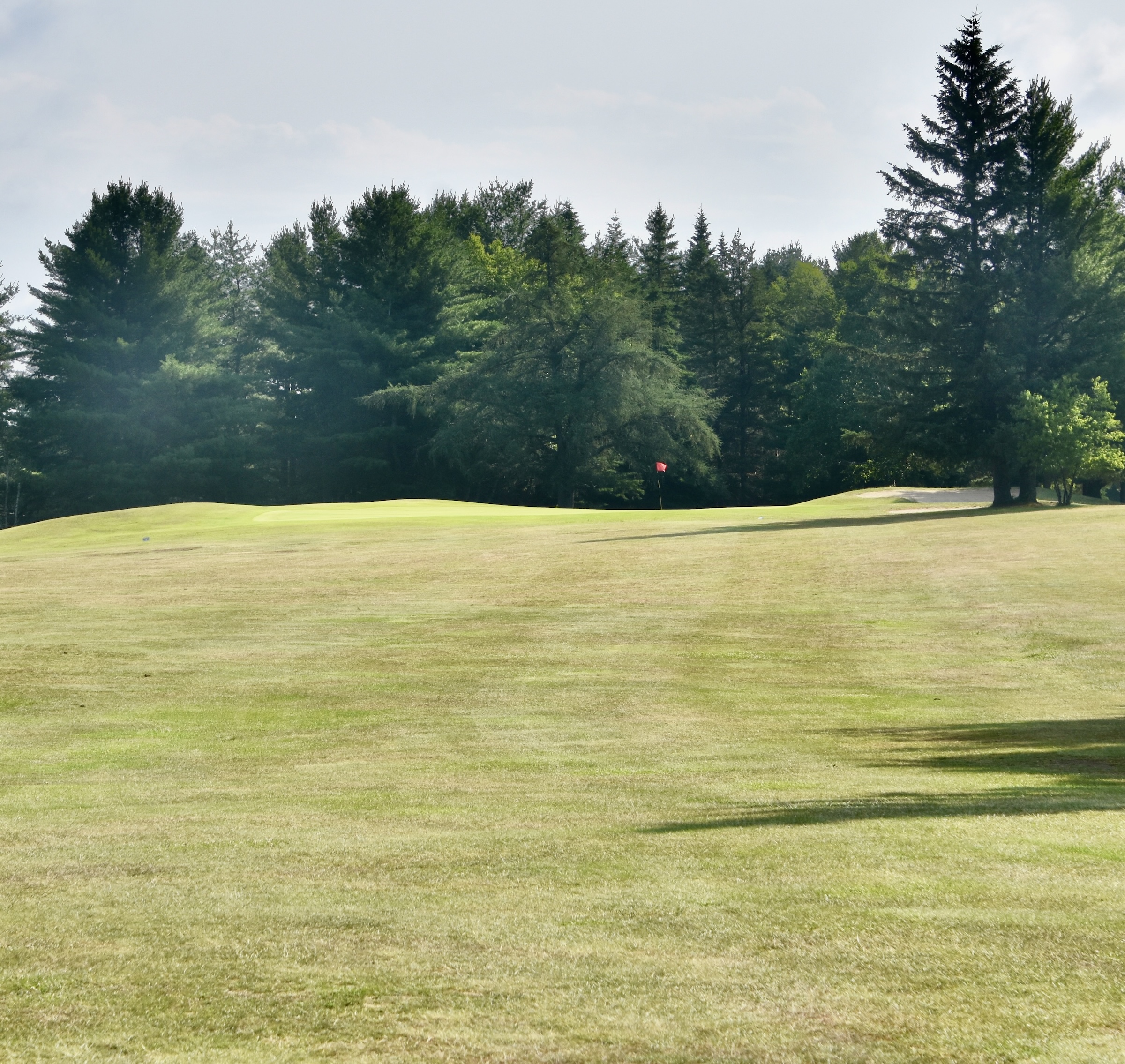
This is one of the largest greens on the course and with no trouble in front can be approached with either a pitch or a chip, whichever you are more comfortable with.
St. Ignace No. 7 – 322 Yard Par Four
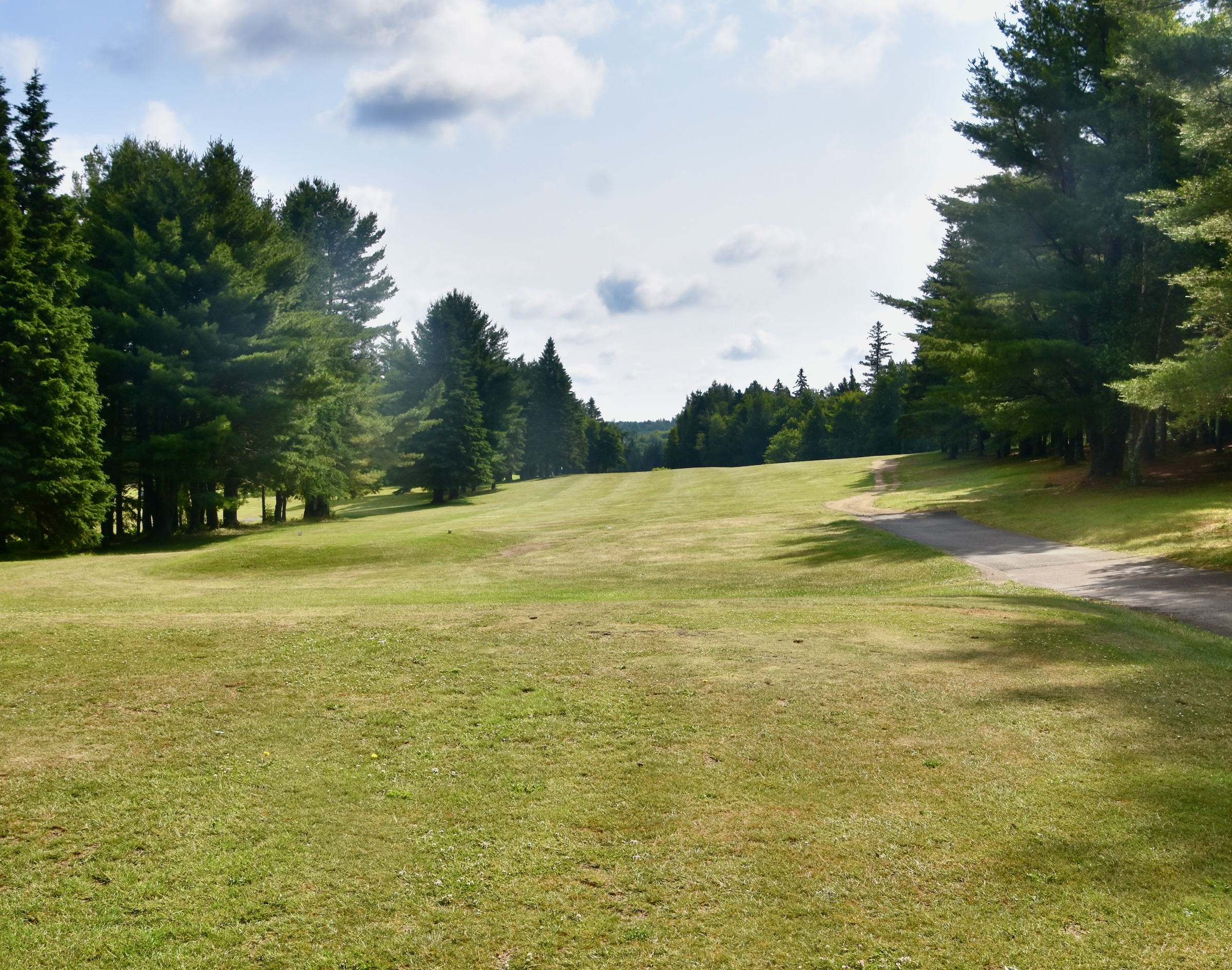
This is a short, but very tricky par four as the fairway is much narrower than the previous par fours and has a definite slant to the left. Driver is probably not required here, but precision is.
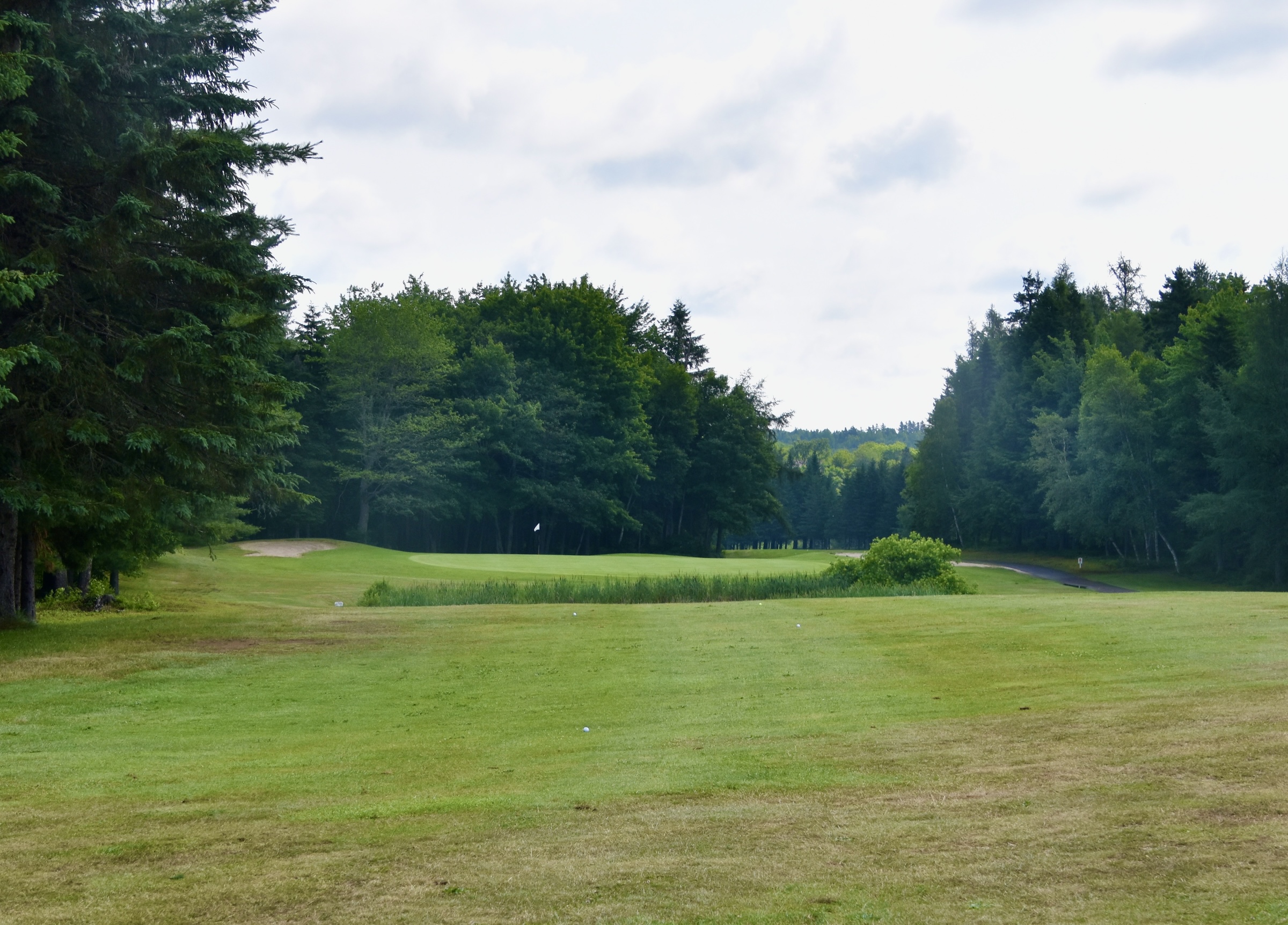
The problem is that is that if you take too much off from the tee, you end up with this approach that must clear the pond that goes almost to the front of the green. That is my ball just in front and you can see the three others well ahead of it. Now I am wishing I had hit driver. Oh well, live and learn.
No. 8 – 483 Yard Par Five
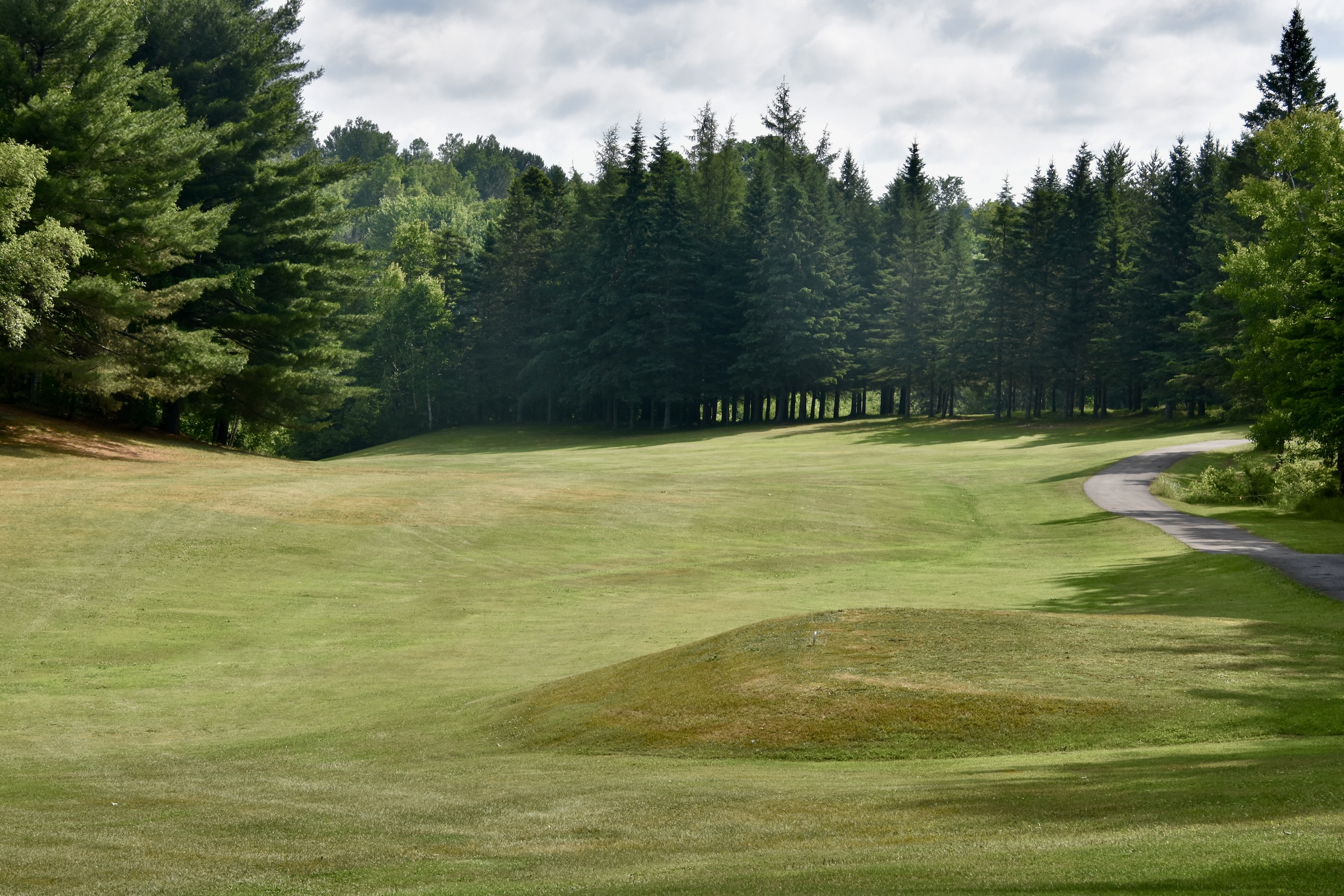
The second par five on the front is another risk reward hole with the option for big hitters to cut off the dogleg left by clearing the trees. Good luck with that. Mortals just need to make it to the corner of the dogleg without going through the fairway.
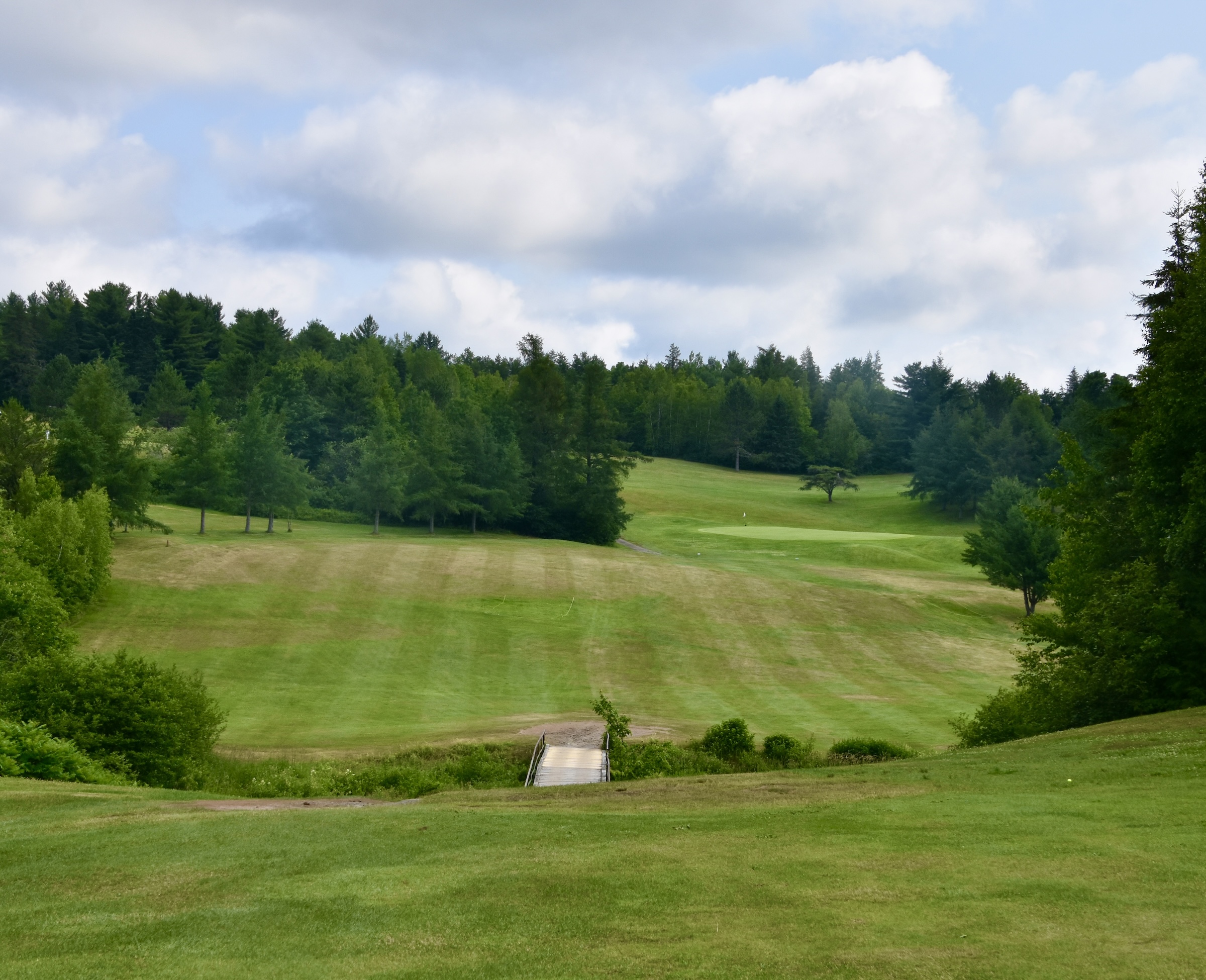
Having made it past the dogleg you get this great look for the second shot. Clearing the stream should not be an issue, but you do want to aim well left as the ball will kick severely to the right once it lands.
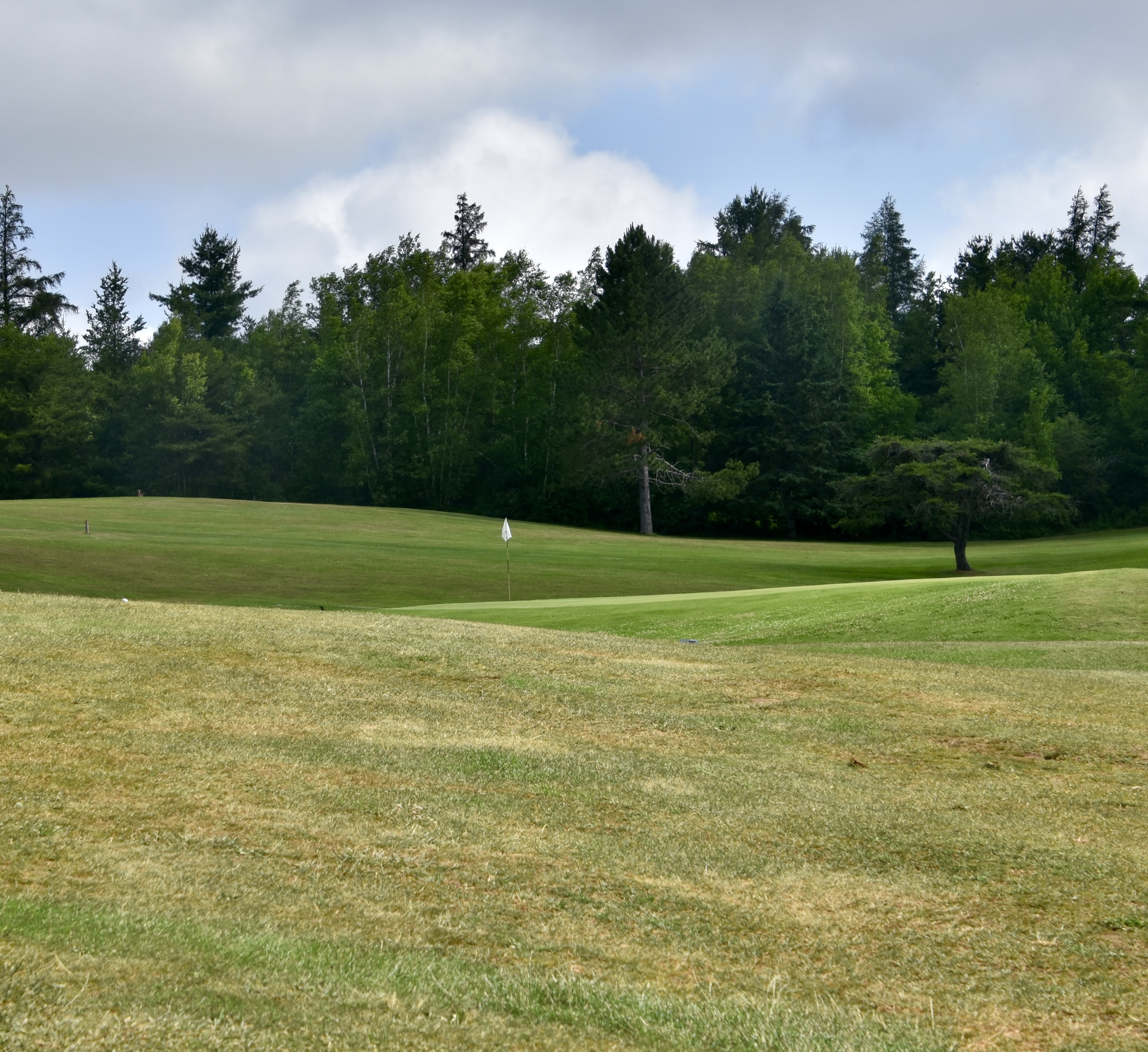
This approach shot is trickier than it looks because the green slopes dramatically from right to left. It’s very interesting how Cornish has placed this green in contrast to everything else on this hole that goes left to right.
St. Ignace No.9 – 125 Yard Par Three
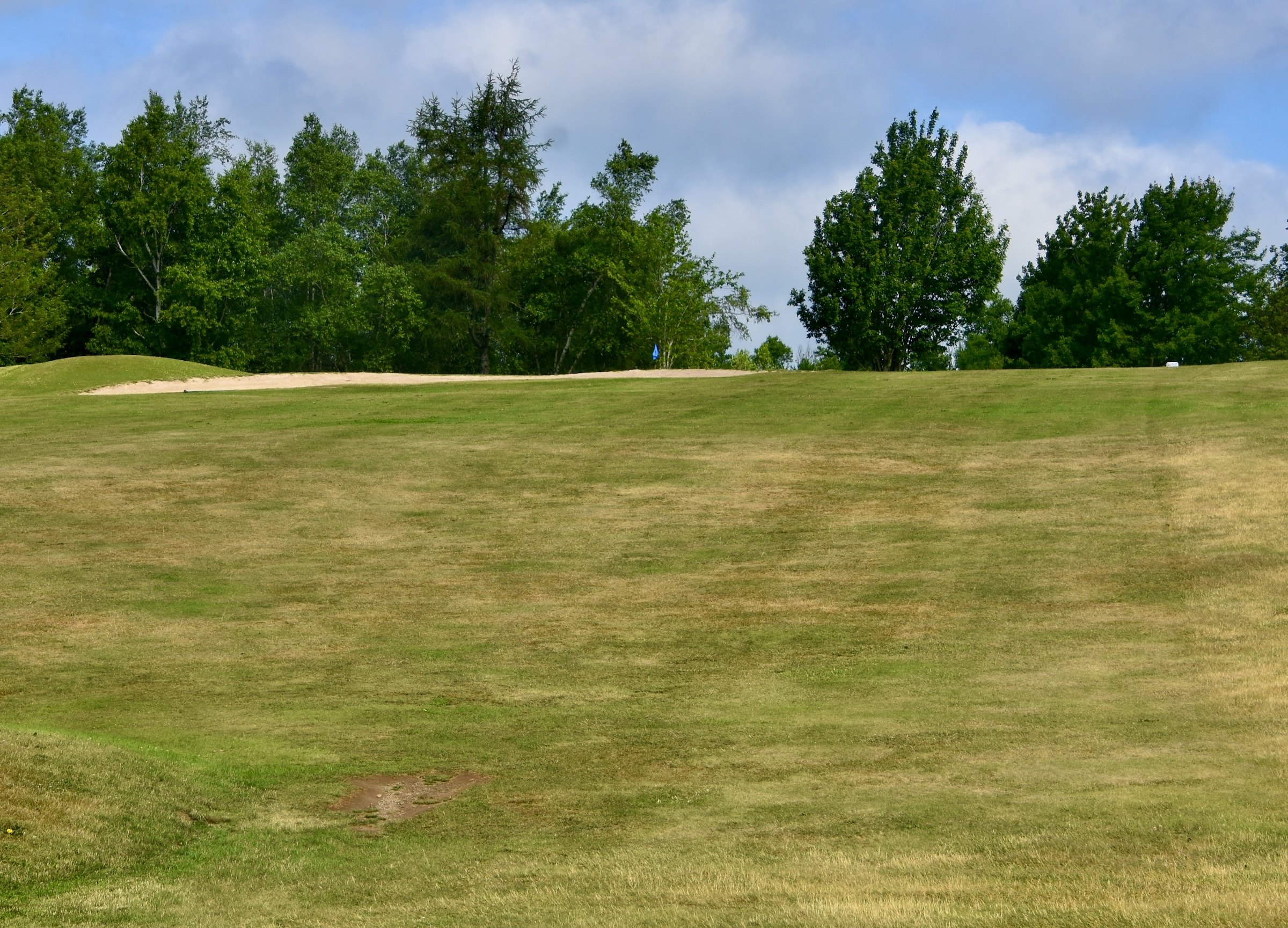
This is the first of three deadly par threes at St. Ignace. At only 125 yards it shouldn’t be that difficult, but it is so uphill that it plays way, way longer. We were playing with a member who told us to take at least two extra clubs and even then not one of us, except the member, reached the green. From the tee box the shots looked like they were right at the pin, but upon getting up to the green they were all in the front bunker. From the back tees this hold measures 188 yards, but would play at well over 200.
No. 10 – 323 Yard Par Four
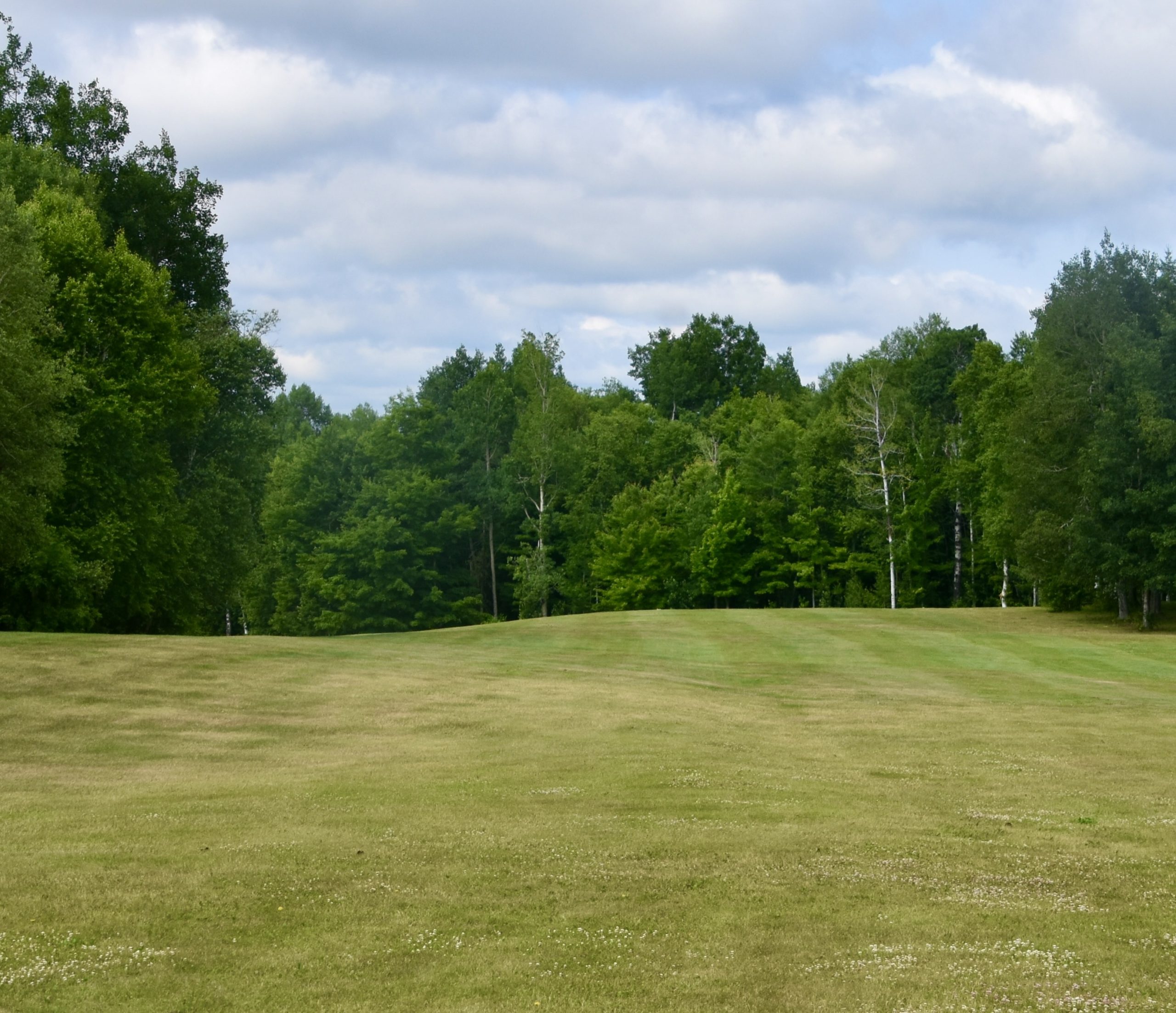
It doesn’t seem physically possible that so many holes at St. Ignace can play uphill, but here we go again. After learning my lesson on No. 7, I do hit driver here.
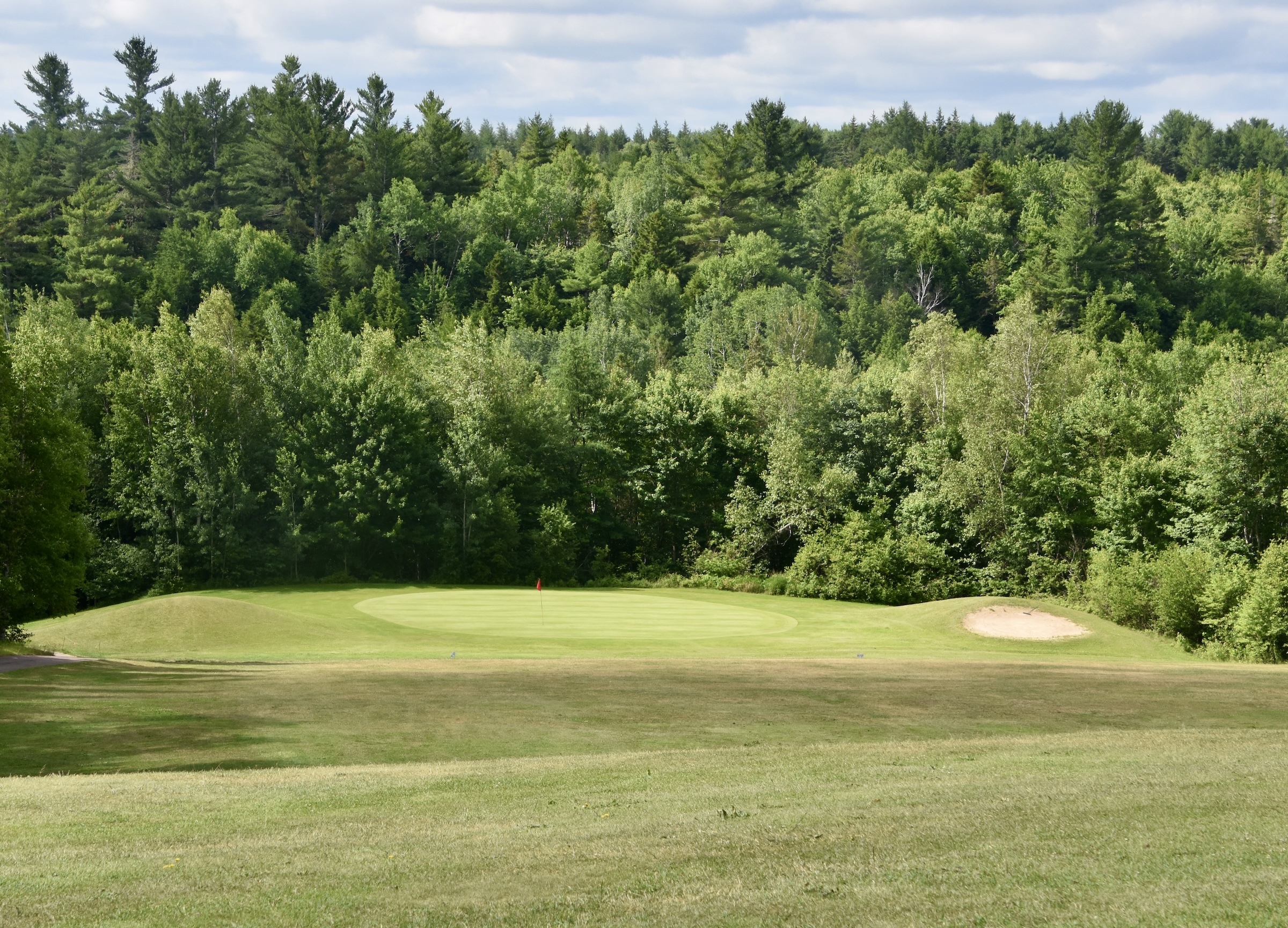
And get this lovely looking approach shot to the smallest green at St. Ignace. This reminds me very much of No. 8 at Highlands Links, the Stanley Thompson masterpiece on Cape Breton and I can’t help but think that Cornish might have had it in mind when he designed this hole. I call these up and over holes. From the tee you have a blind tee shot that must clear a fairly severe uphill ridge and you’re not particularly thrilled about it. But then when you clear the ridge and see the green well below, you have kind of a Wow moment and you realize the blind tee shot was well worth the reward of the approach shot.
St. Ignace No. 11 – 212 or 100 Yard Par Three
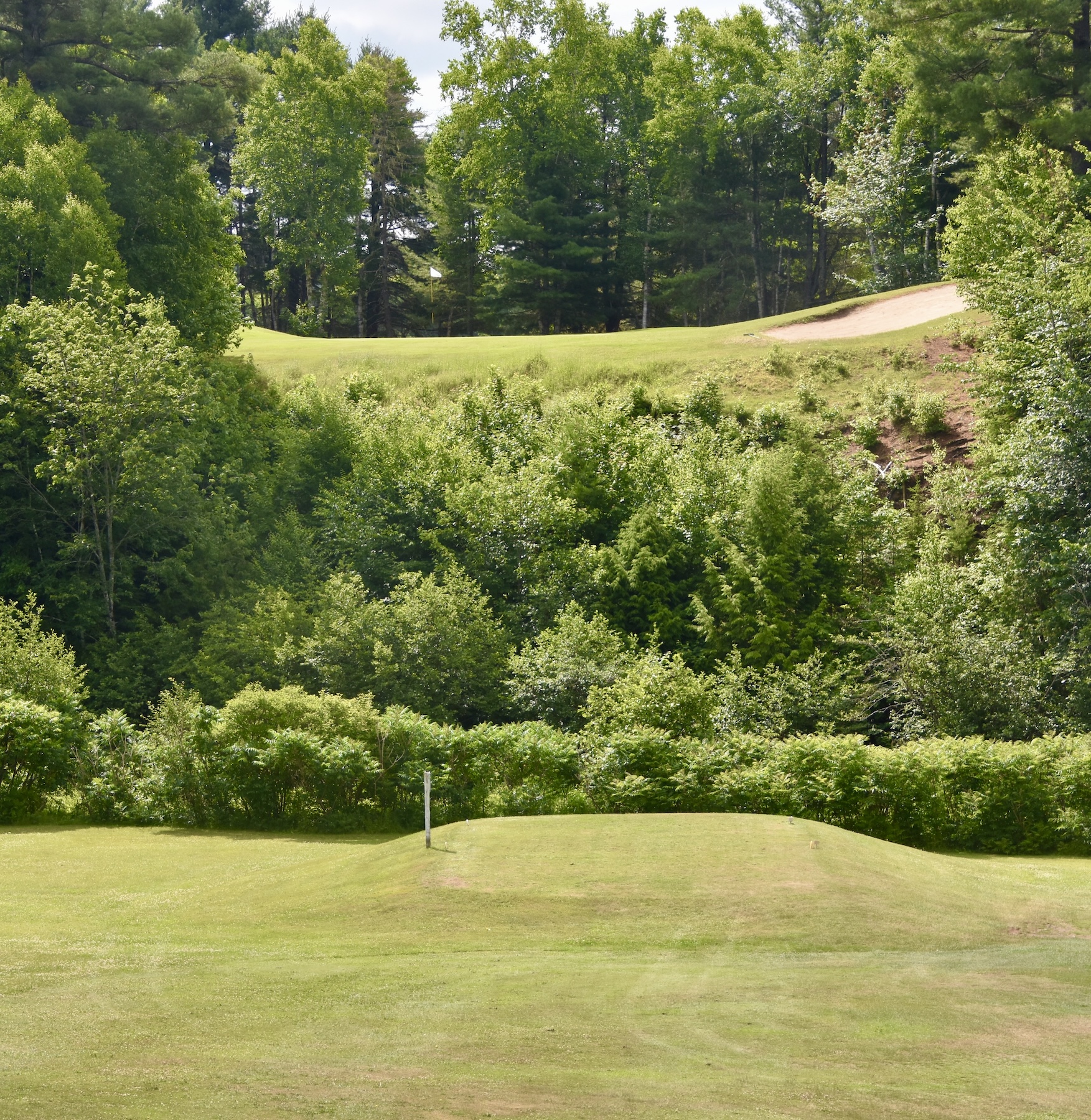
Up until I saw this hole, I thought No. 6 at Fundy Golf Course, another Stanley Thompson design, was the toughest par three in New Brunswick. From the back tee No. 11 at St. Ignace looks nigh impossible. If I thought No. 9 played way longer than the yardage then this one at 212 yards, must play more like 250. The photo does not do justice to just how narrow that opening it – as wide as the green and no more.
Nevertheless Grant is going to give it a go.
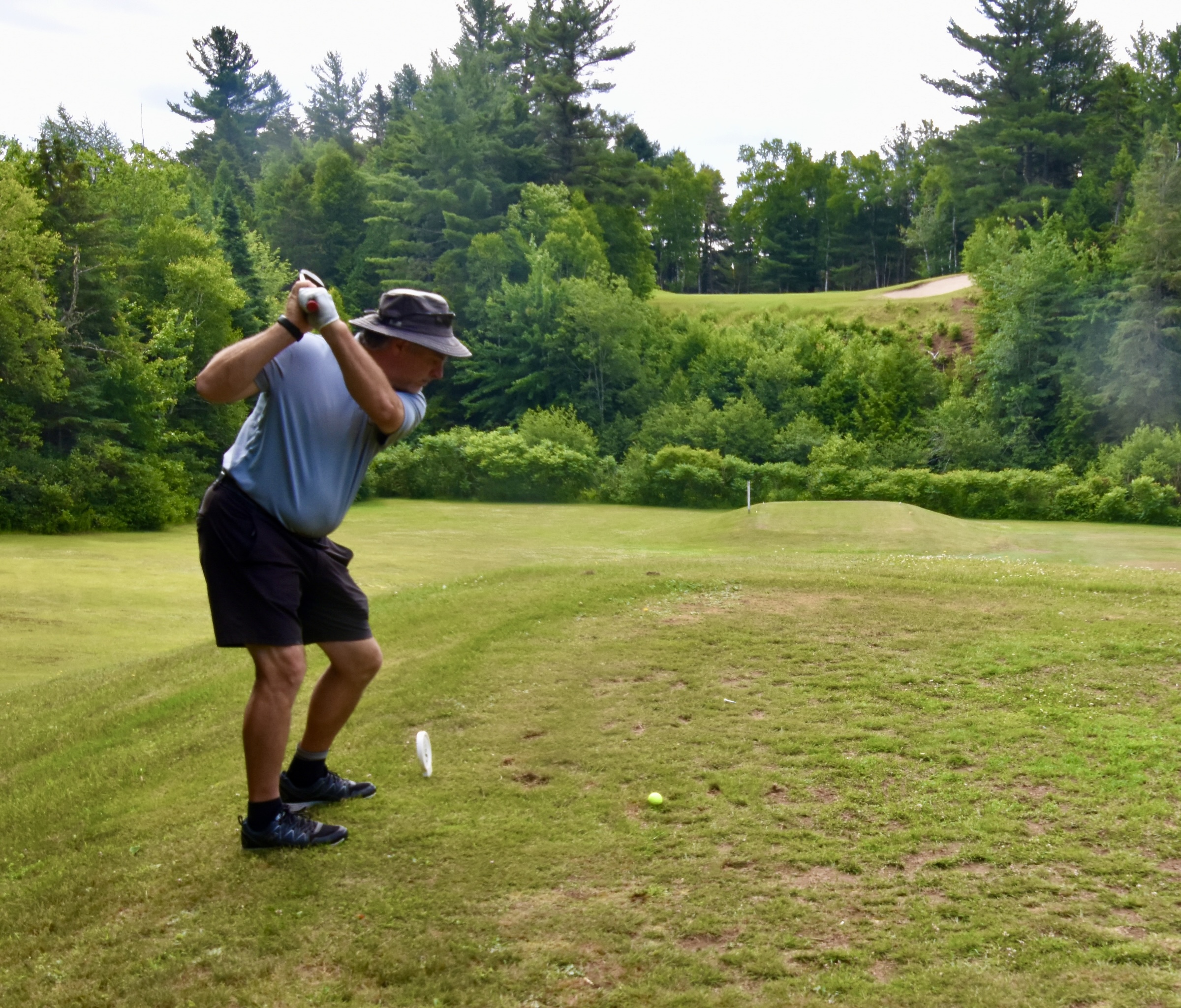
Standing outside the tee box, a la Fred Couples, and seemingly off balance, Grant hits one of the purest iron shots I’ve ever witnessed and lands the ball 18 inches from the cup. Did someone say this was a hard hole?
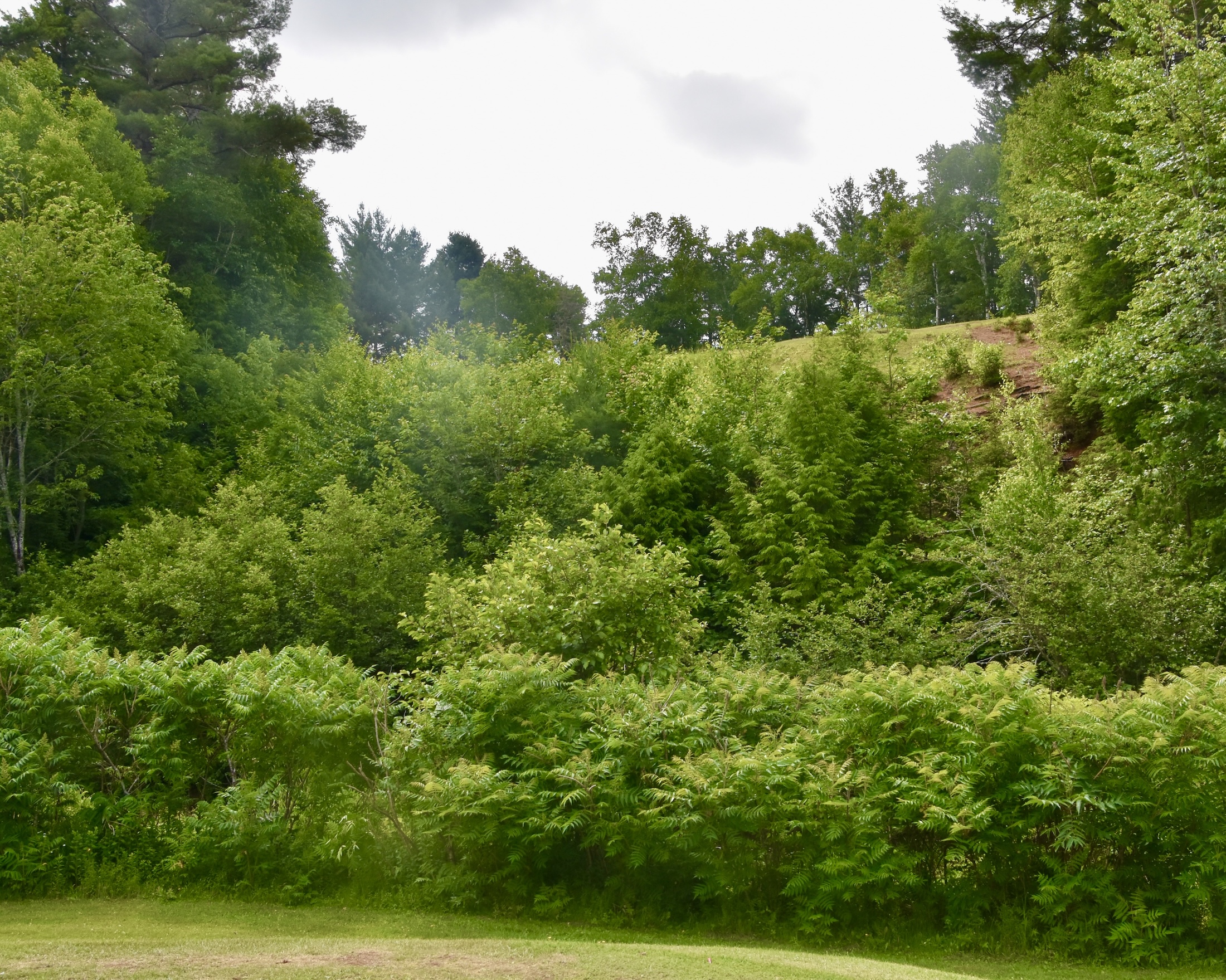
It’s almost as brutal from the forward tee as you cannot see the pin and there is still no room for error. As with No. 9 I cannot convince myself to take enough club and come up short aka lost. This is one of the most dramatic par threes you’ll find anywhere and one you’ll long remember.
No. 12 – 524 Yard Par Five
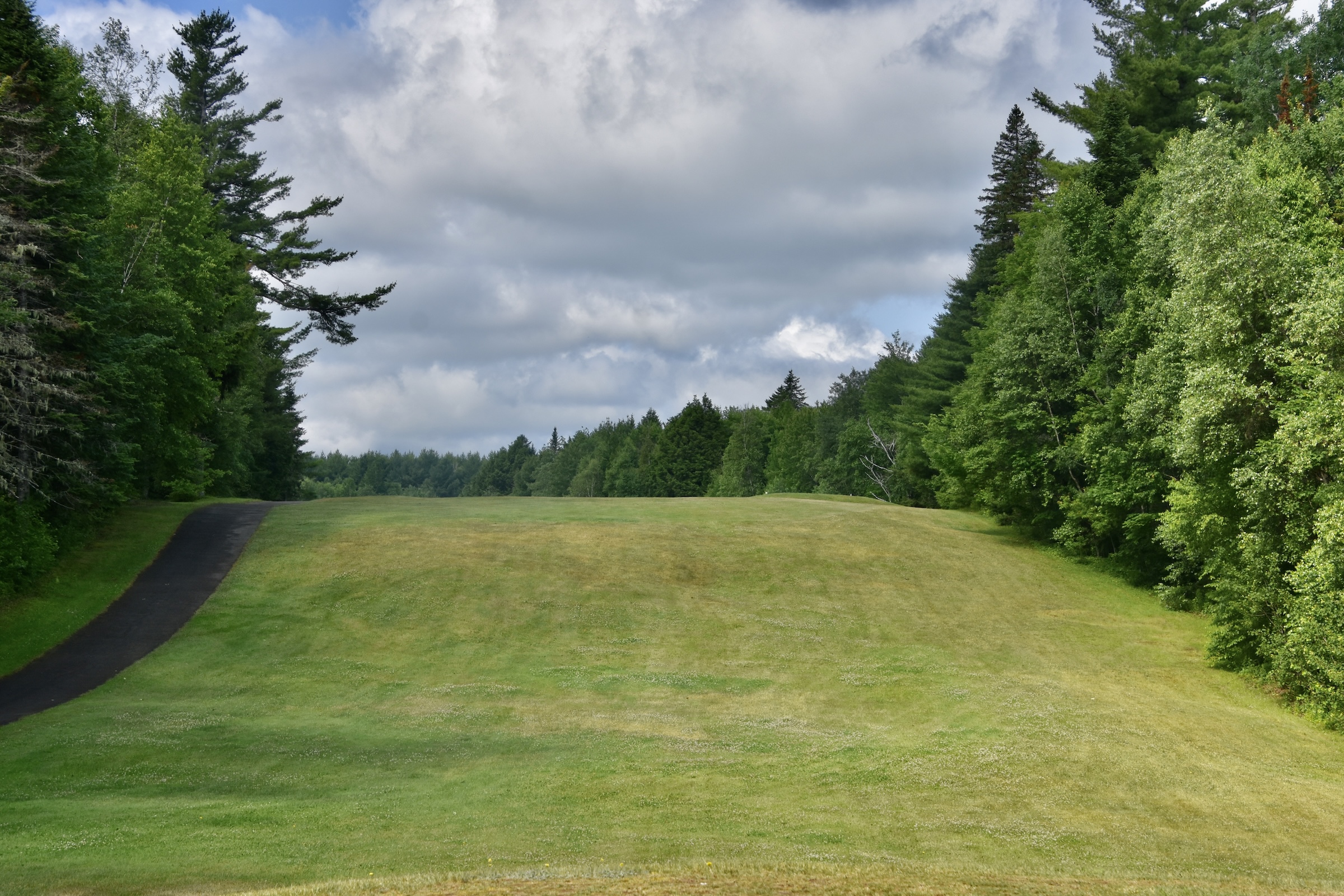
OK, this looks familiar. Yet another crest to clear on the toughest hole on the back – seriously, tougher than No. 11?
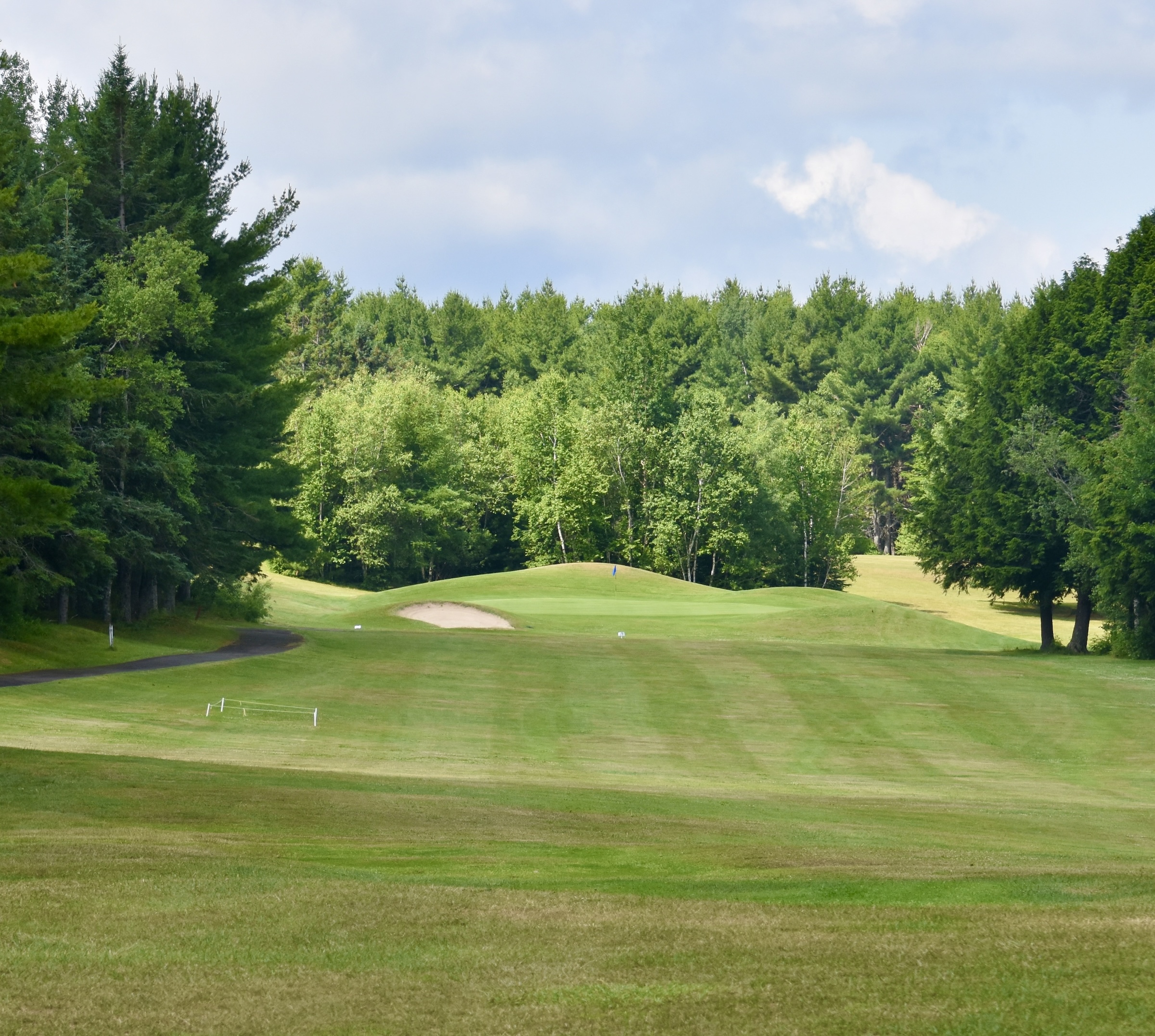
You get a lot of roll if you clear the crest on the fly and a good second shot should leave this approach to another pretty small green.
St. Ignace No. 13 – 291 Yard Par Four
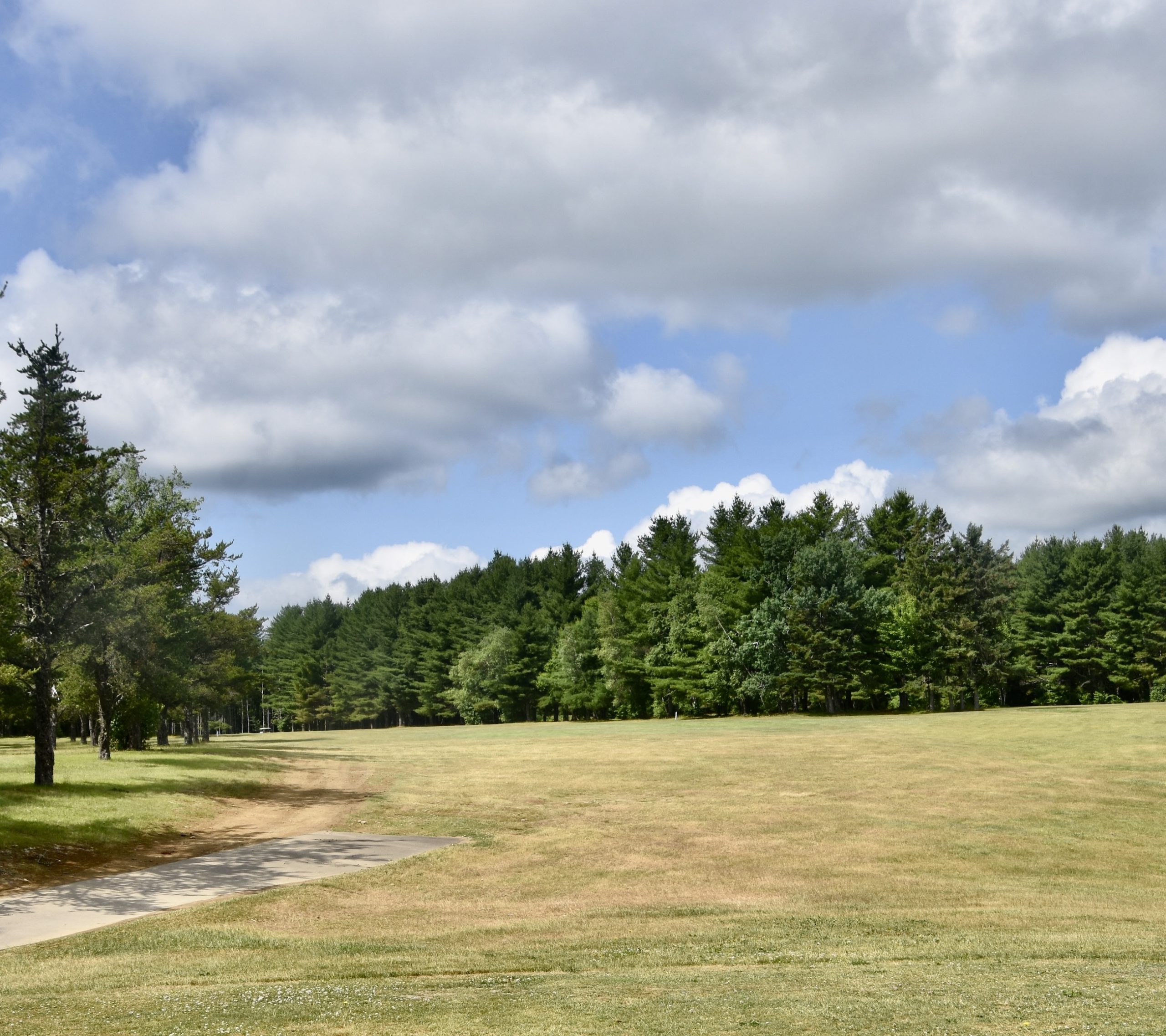
It’s pretty de rigeur that every course should have a driveable par four and this is St. Ignace’s version. However, it would require going over the pine trees on the left to reach the green. For me, 291 yards is not remotely in the cards so I hit a wood out straight about 200 leaving a nice wedge into the easiest hole on the course.
No. 14 – 387 Yard Par Four
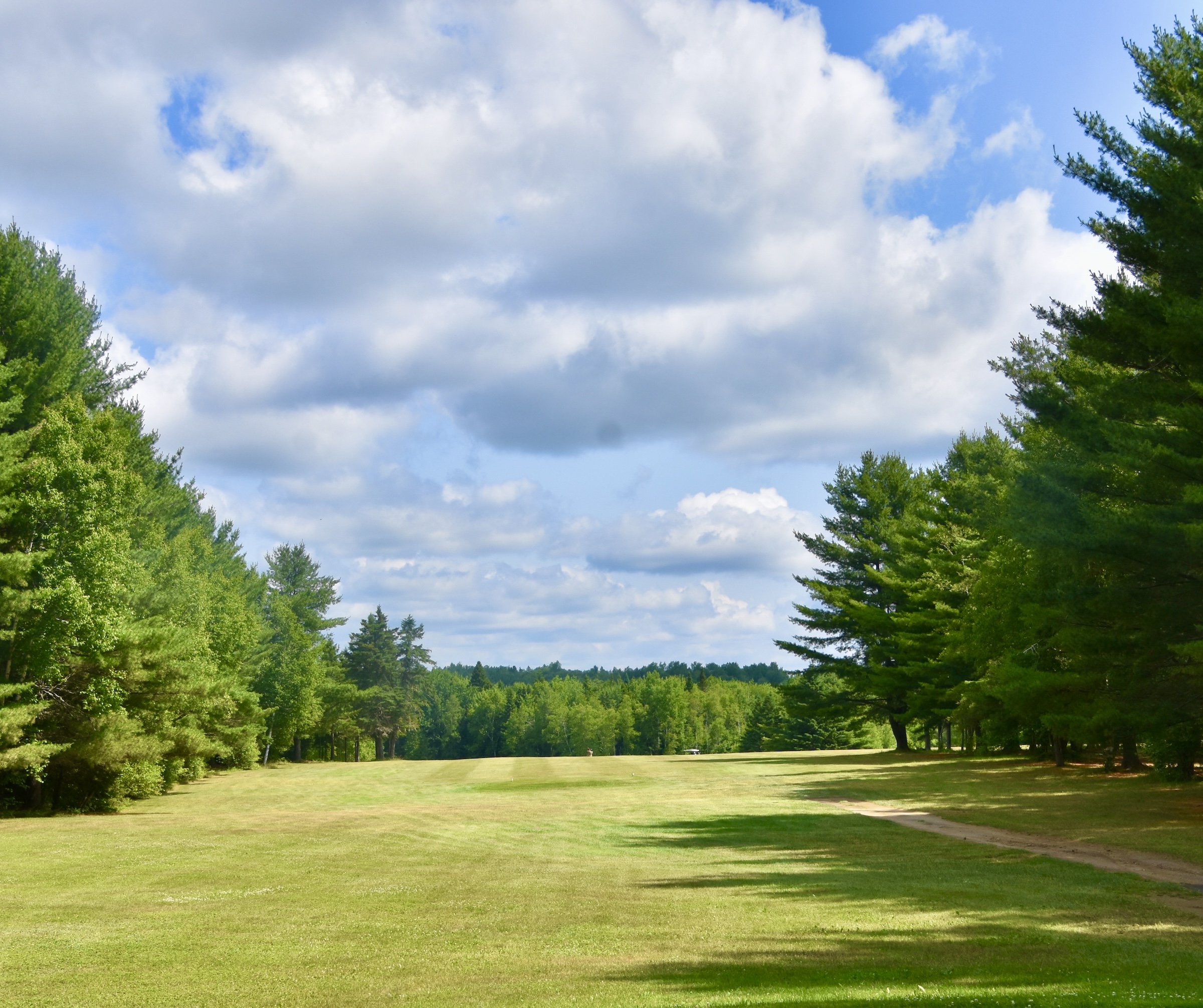
This is actually a very nice driving hole with lots of room to the right past that one pine tree that sticks out.
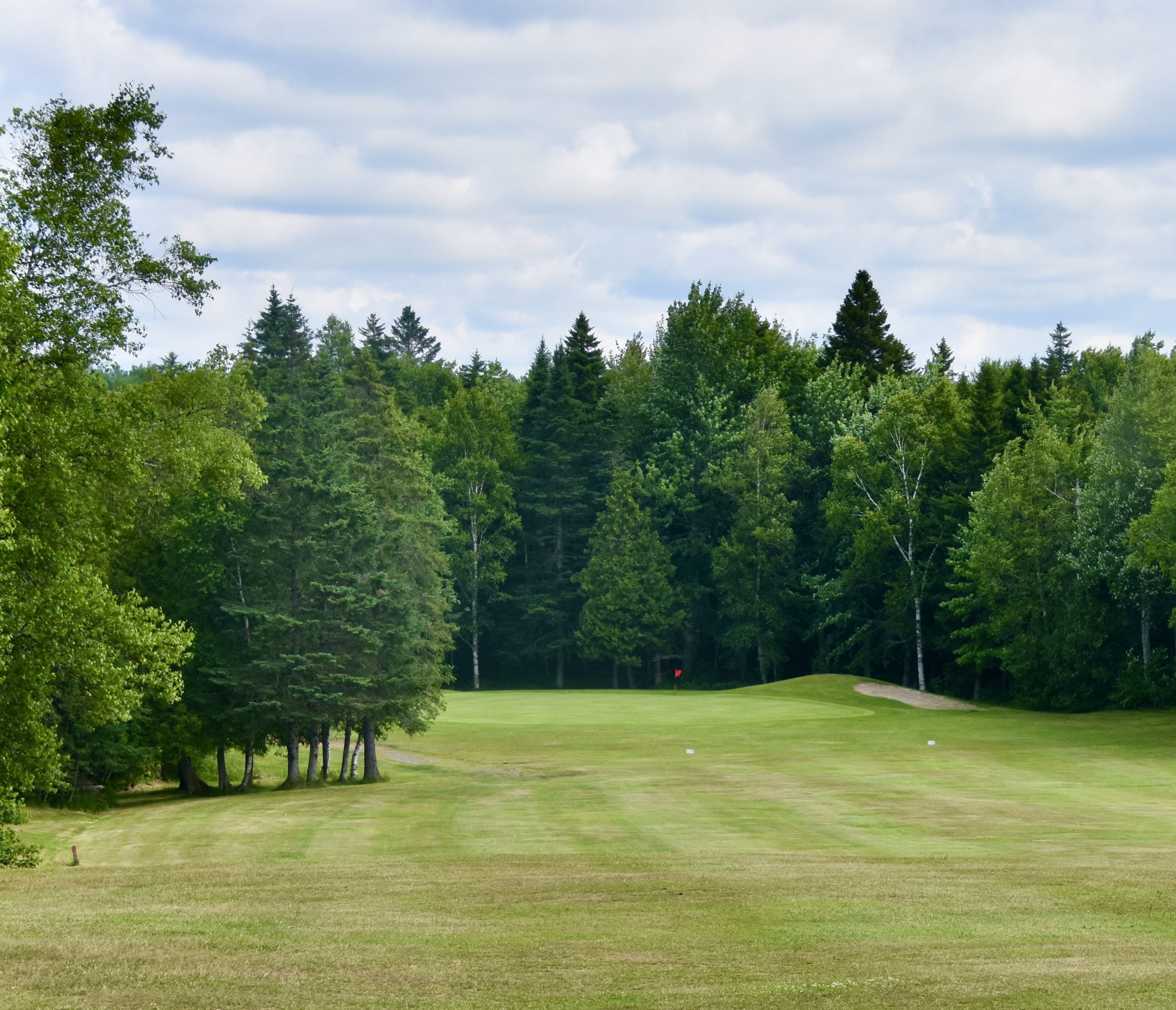
It’s another up and down hole although not as dramatic as No. 10. It has one of the bigger greens on the course and plays shorter than the stated yardage.
St. Ignace No. 15 – 175 Yard Par Three
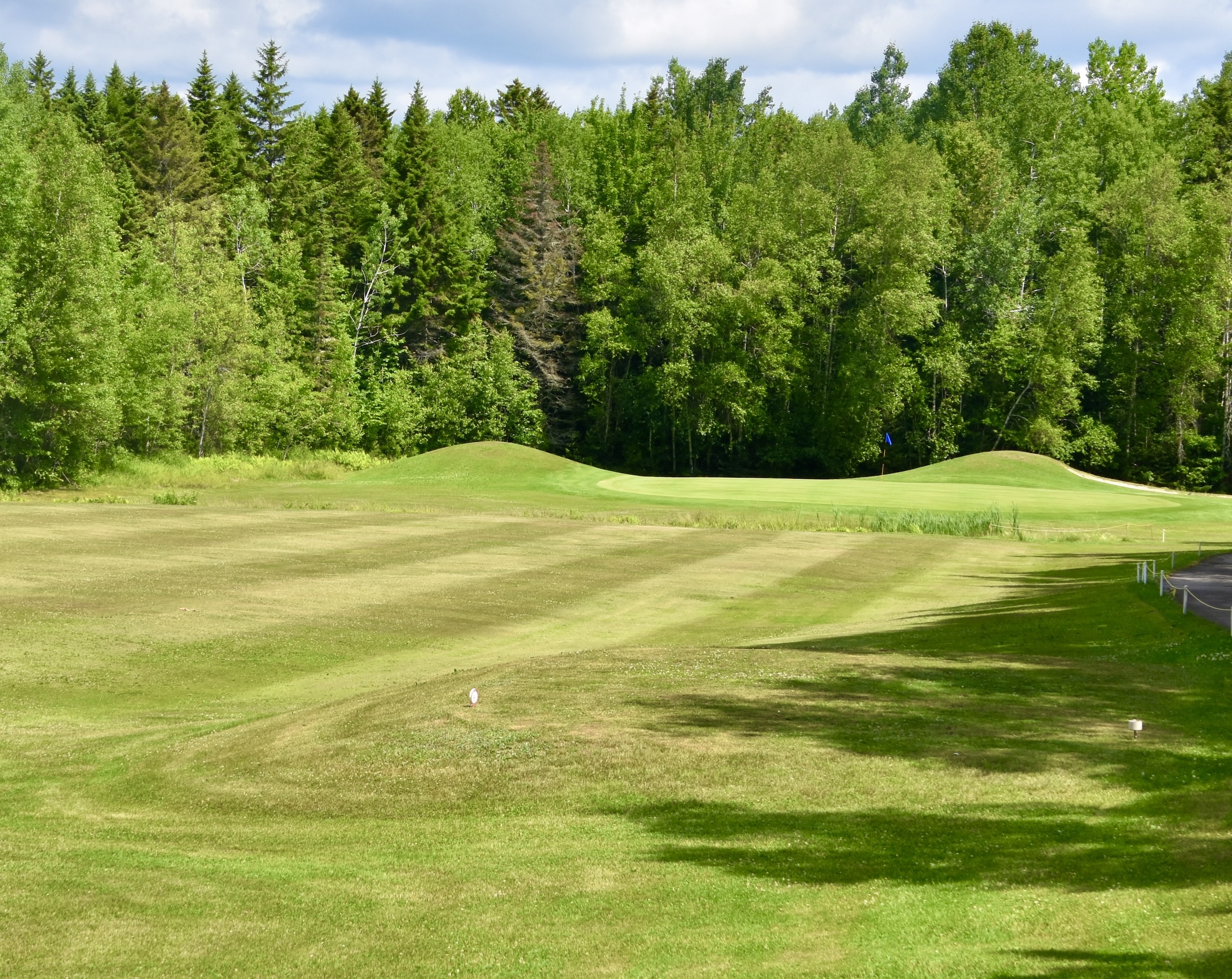
This is the third of the killer par threes at St. Ignace. There is only one tee box for all golfers and it requires a well struck tee shot that must clear the pond at the front. Club selection is everything because too much club and you’ll be in the woods at the back. For big hitters this is not such an issue as they can come in with a mid-iron or less, but for seniors and most women, a wood is probably necessary and then you’ve got to hold the green.
No. 16 – 329 Yard Par Four
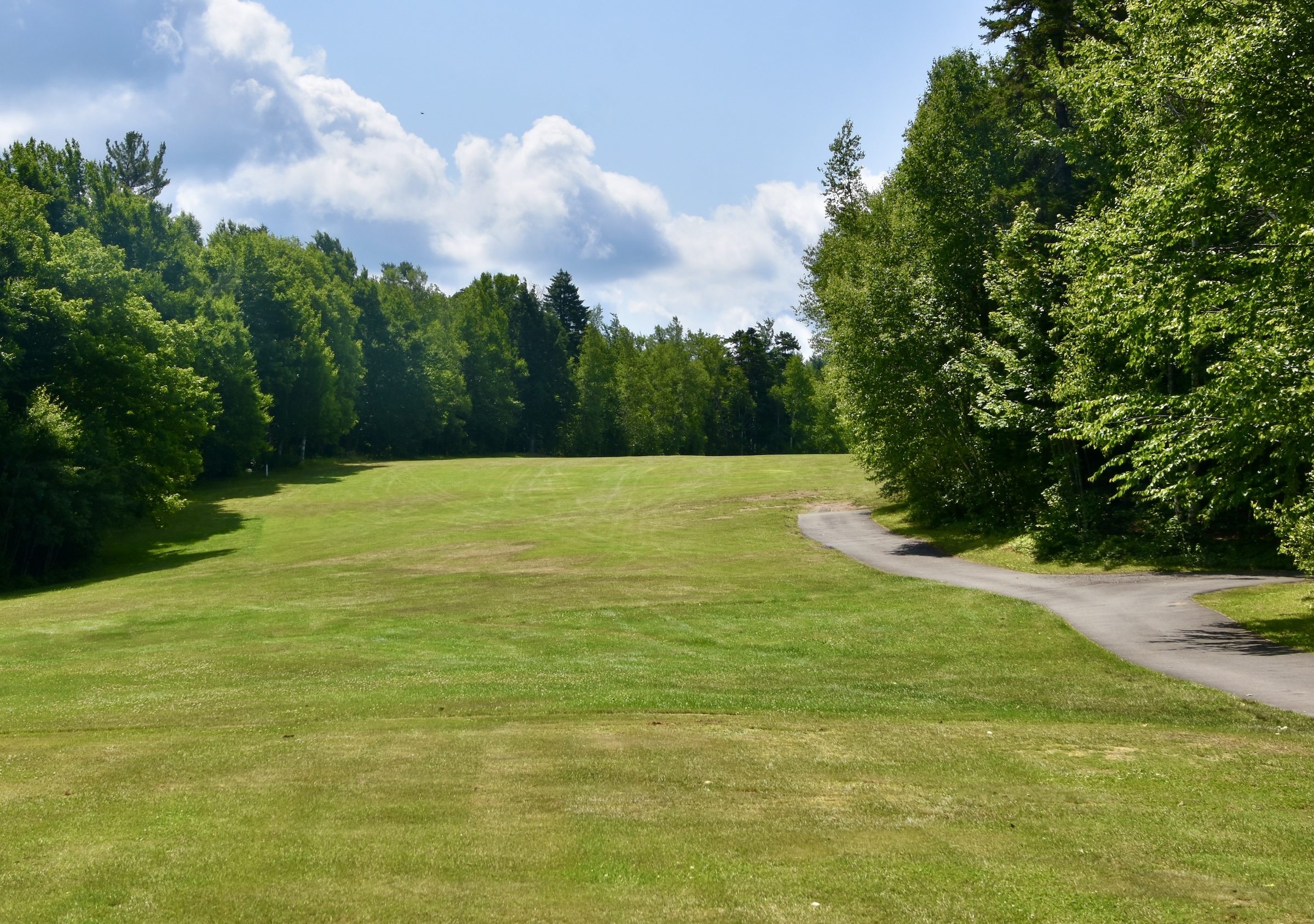
This dogleg right is probably the tightest hole at St. Ignace. Once again big hitters can try to cut off the dogleg, but the trees are so close to the tee box that a driver probably wouldn’t be the club to try it with.
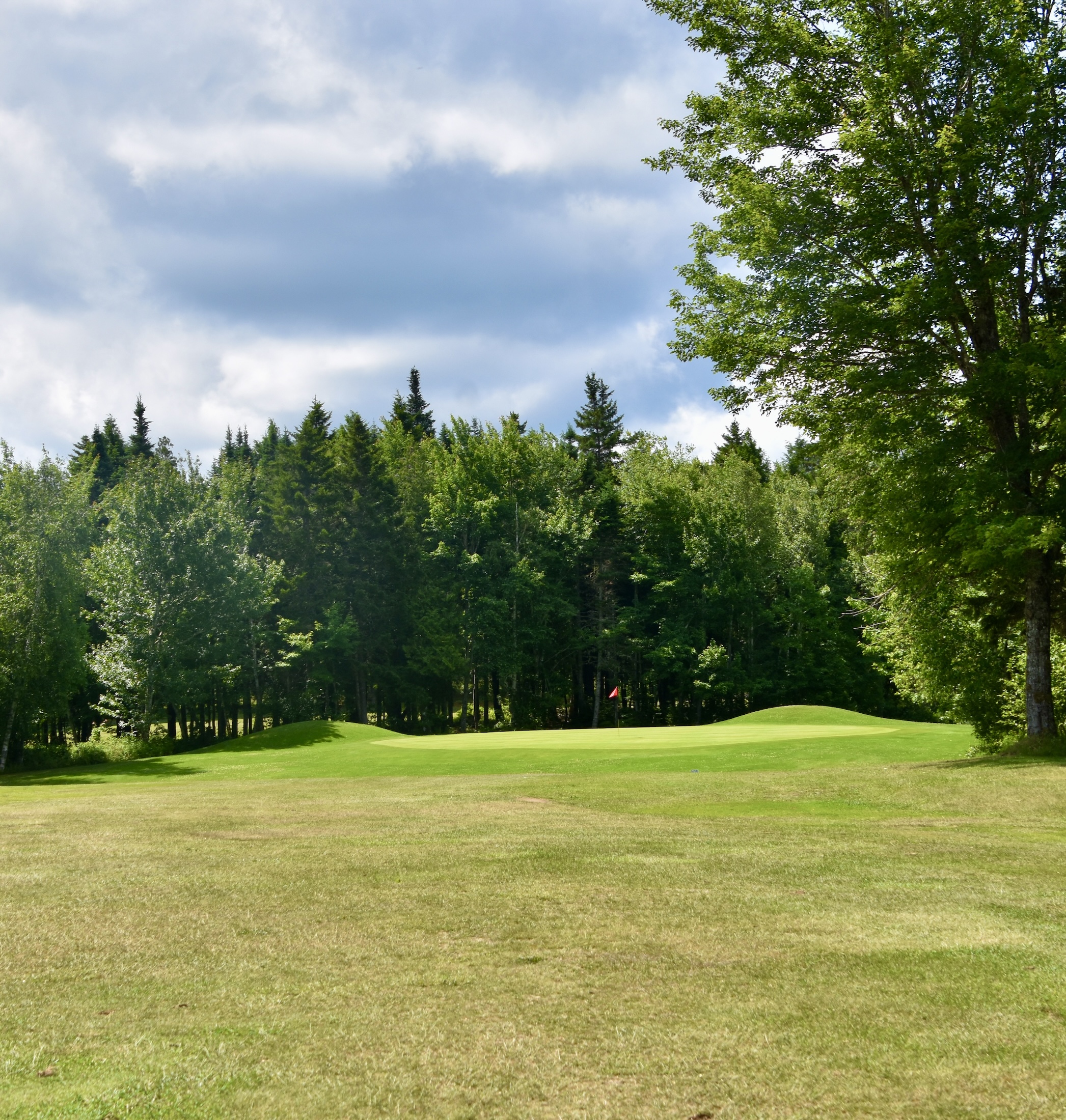
A well struck wood should leave a relatively unstressful approach to this tiny green tucked nicely into the woods.
St. Ignace No. 17 – 462 Yard Par Five
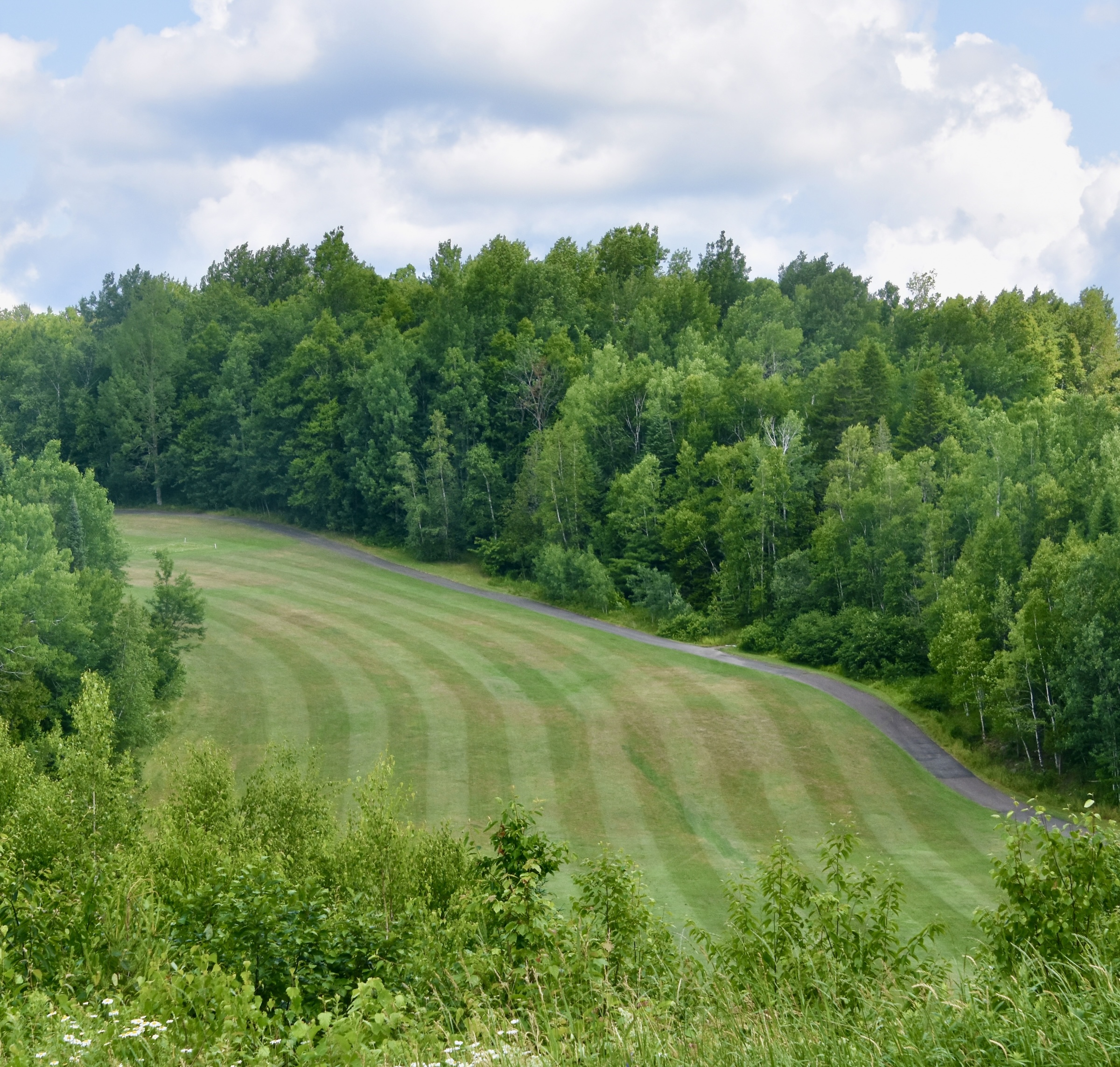
If you’ve been walking the course, you’re not going to like this hole. Yes it starts off downhill, but then.
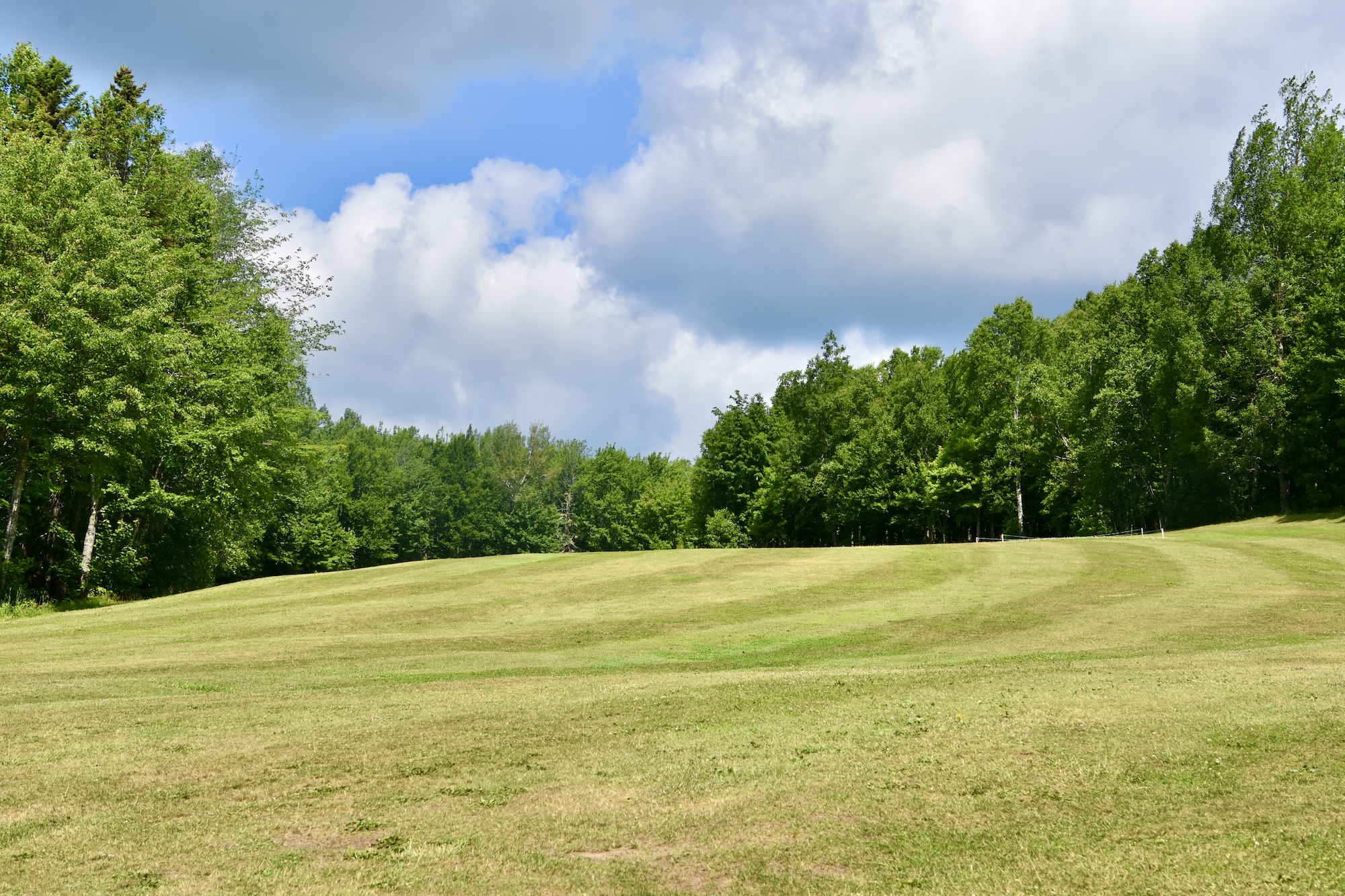
The second shot is completely blind and if we weren’t playing with a member would have been a disaster. The target here is the right tree line and anything closer to the fairway will roll all the way down to the woods on the left. This is a true roller coaster of a hole.
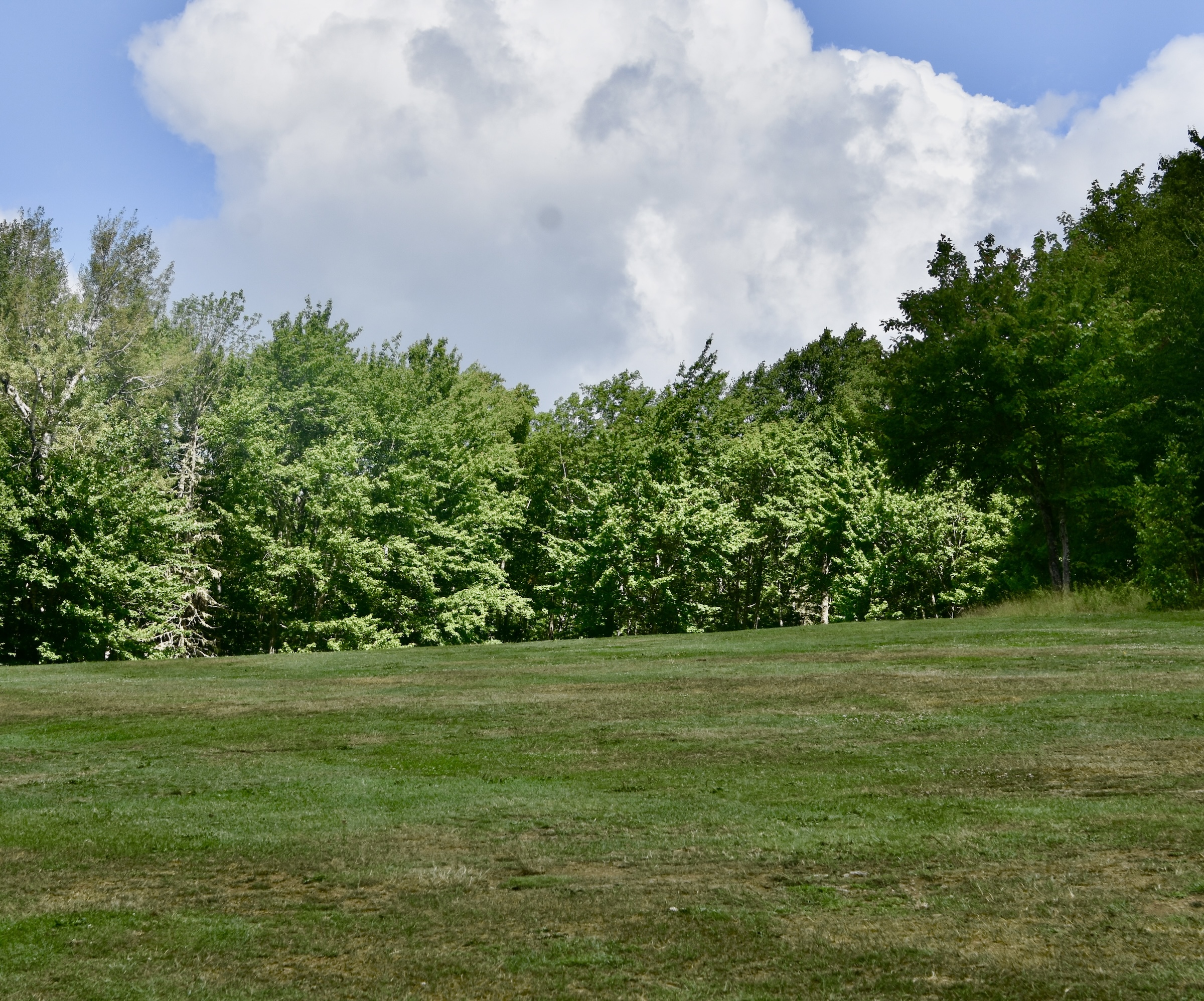
WTF? I still can’t see the green on the third shot. Once again the member gives us the line and even with a cart, I’m drained by the time we reach this green. This is a hole you’ll either like or hate. We get missed reviews in our foursome.
No. 18 – 329 Yard Par Four
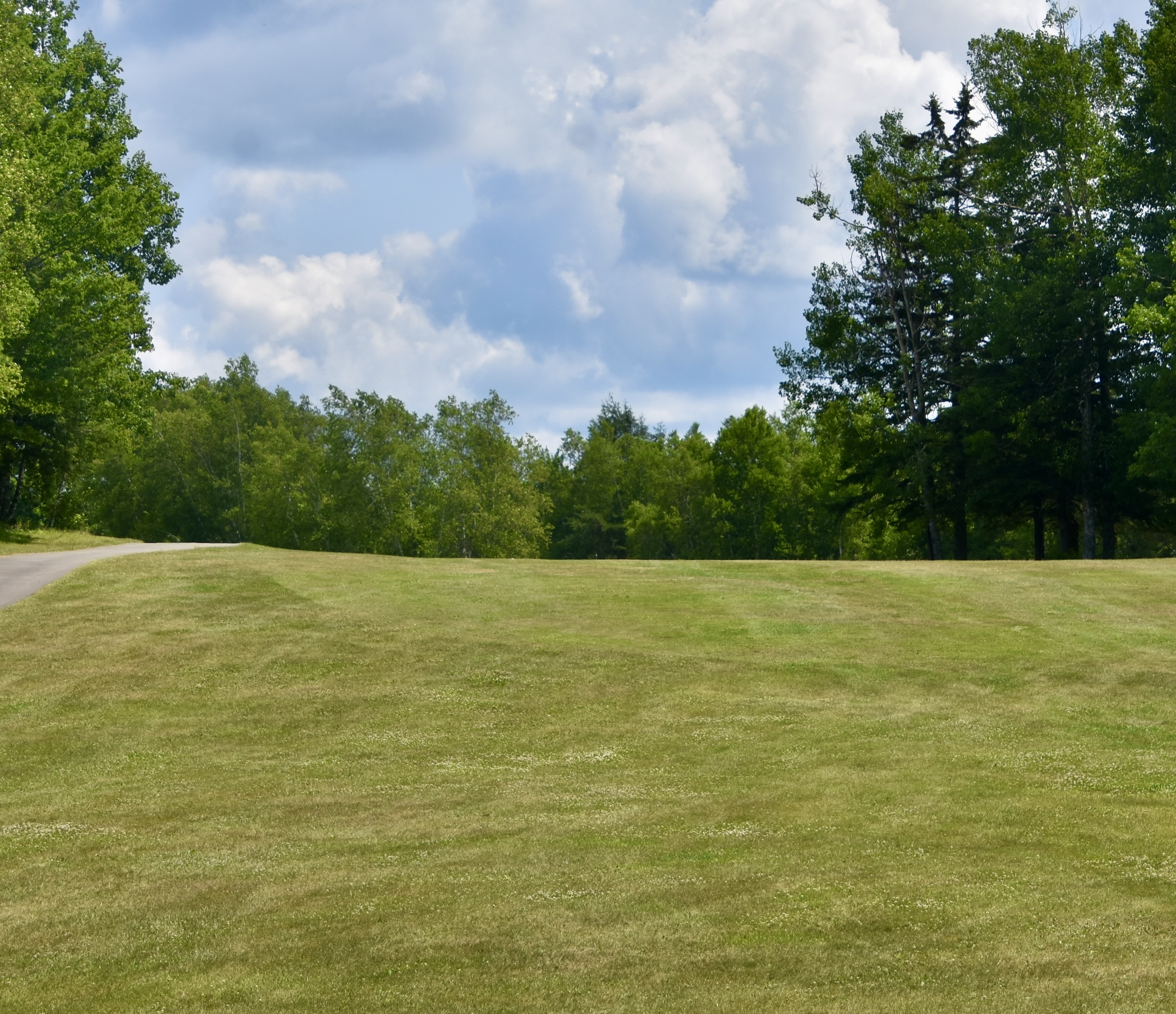
Just another blind tee shot on the final hole.
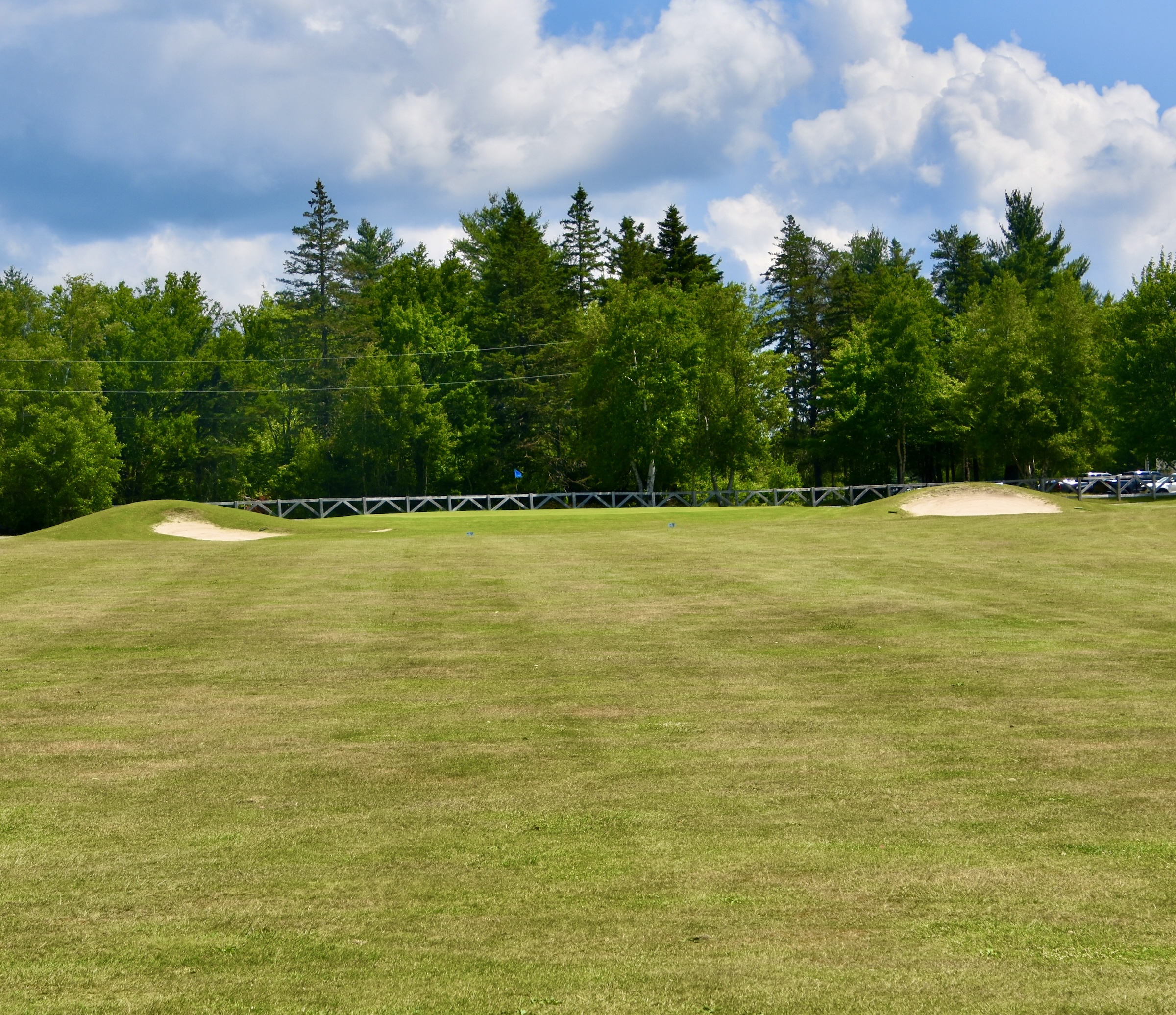
Once you can see the green, like No. 16 it’s pretty doable and a chance to end the round on a high note with a possible birdie.
I thoroughly enjoyed playing St. Ignace, even if there are a bit too many blind shots. It is truly a hidden gem and while Parks Canada doesn’t build golf courses anymore, this is a great adjunct to Kouchibouguac. So along with your bikes, bring your clubs.

